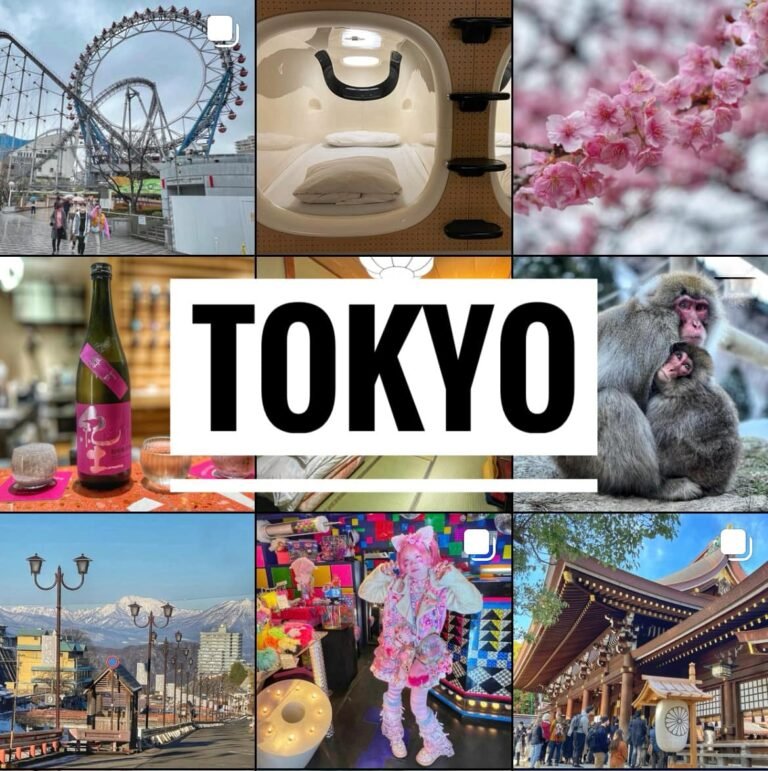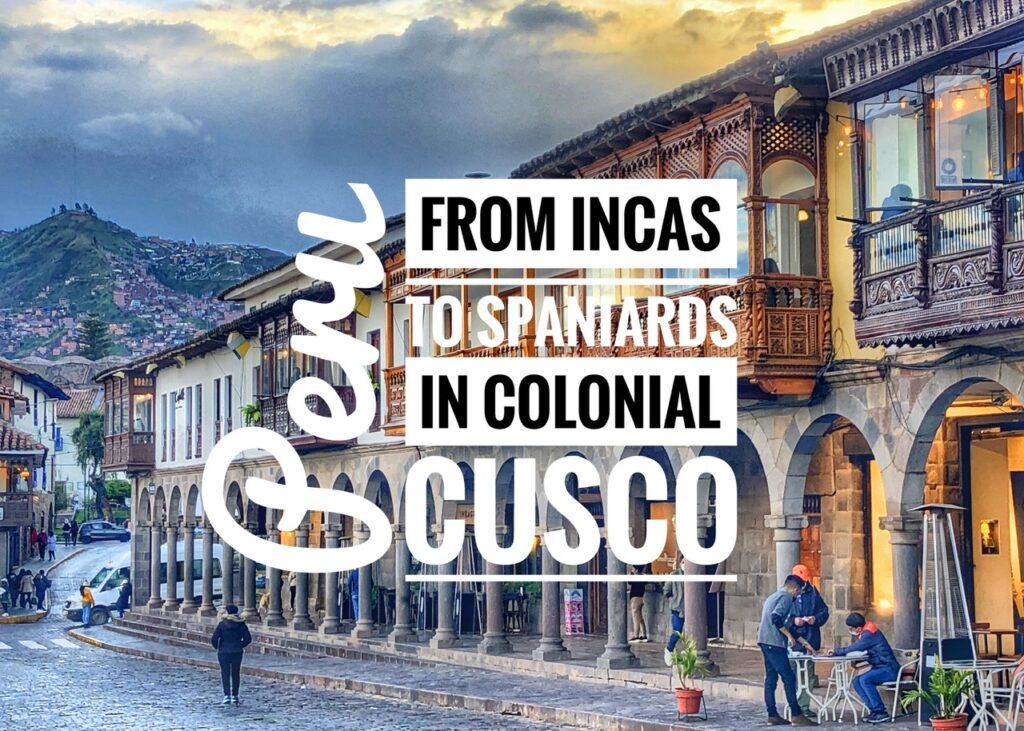
Any true traveler has “suffered” through a budget airline. We use quotes because we realize flying is privilege (which we’re grateful for) no matter what sort of jet box you’re gliding through the air on. In our travels, we have been on many, but perhaps none so restrictive or annoying as Viva Air. If you’re familiar with budget travel in Europe, you probably have heard of Ryan Air. Well, we read that Viva is quite figuratively the ugly stepsister, owned by the same family, without the blessed protection of EU legalities.
In the beginning, we were quite happy with our flight, which we got for free, thanks to credit card points. It was set to depart Bogota at 9:30 am, with a quick layover in Lima before heading onward to Cusco. A couple weeks before, however, we got a notice that our flight had been changed and now our flight departed at a joyous 2:40 am!! Well, looking at the bright side, this might allow for a leisurely 10 hour layover in Lima allowing time to kick off our time in Peru with some airport llama t-shirts or gleefully dropping all our “extra” cash on crappy, doughy airport food. (Later we discovered there were two additional flights to Cusco that left earlier in the day, but of course they would charge us to change, even though this was their fault. Boooo!!)
Firstly, Viva Air said or sent nothing to prepare us your for our trip. The days of just putting your 3 oz. bottles in a baggie are over. Instead, health documentation, exit forms, onward tickets and COVID vaccine cards are getting more and more common and you should ensure all your documents are filled out and organized BEFORE arriving to the airport. As seasoned travelers, we know this, although it would be easy to miss. Obviously you must check ever-changing government requirements on official websites. Then, we have been using the website Sherpa to confirm all requirements (with links) to get in and out of a country. It’s a godsend.
During our preparation for battle process, we learned that Viva “allows you the luxury” to take on one bag. This means one bag. Total. No purse, no small backpack. Nada. It was a “fun” little experiment as we managed to cram all our stuff into our two bigger bags, and one small backpack, down from two. The charge for that extra bag became $55, and only because we ordered in advance. It’s much more at the airport. And, when we arrived to the airport, Greg had to fight (twice) to get get our other bag in the little luggage hole proving it would fit under the seat and not in the overhead bin down to the centimeter. Because that bin space? It’s gonna cost you! Perhaps it was because Mandy was very patient, nice and spoke Spanish to the check in agent, or perhaps it was because the agent appreciated her having all her documents in order, but she let us go without a second charge! Whew!!
Apparently, according to the atrocious Google reviews of the airline, this is not the norm. In conclusion, don’t use Viva Air. But, we were going to Cusco! Yay!
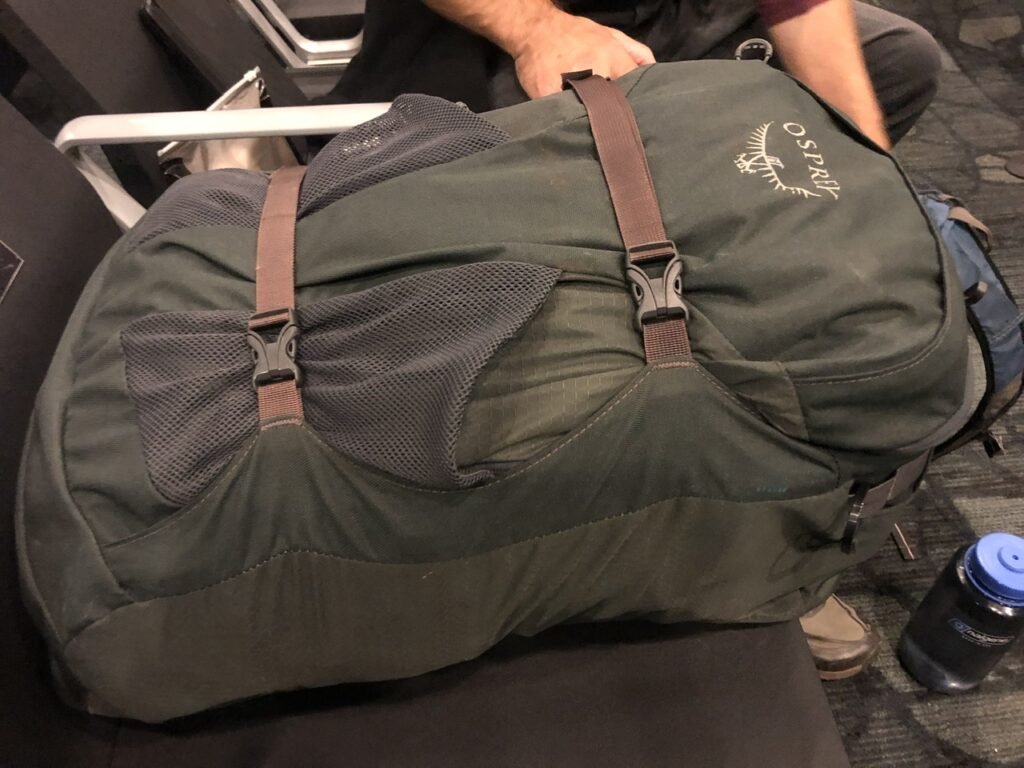
Stuffed to the brim. On any other airline, these bags are meant to be carry ons with no issue.
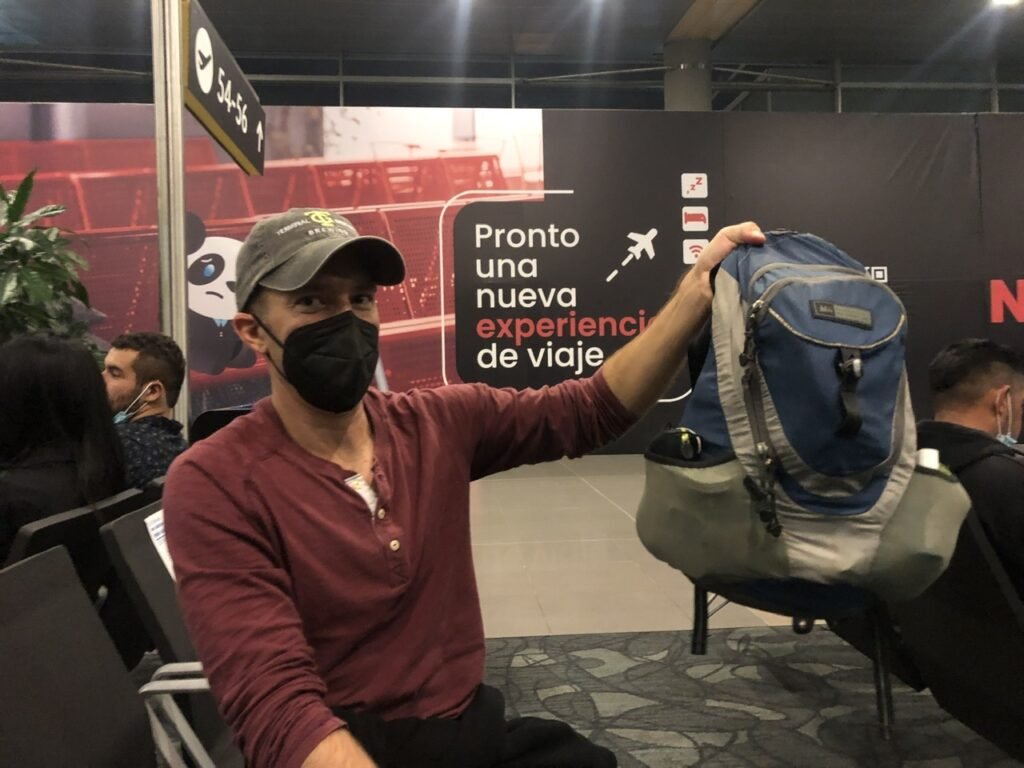
Haha. We’d never seen this little bag so full. Also, it’s a Peruvian requirement to wear either an N95 or double medical masks at all times on all airlines and public transportation.
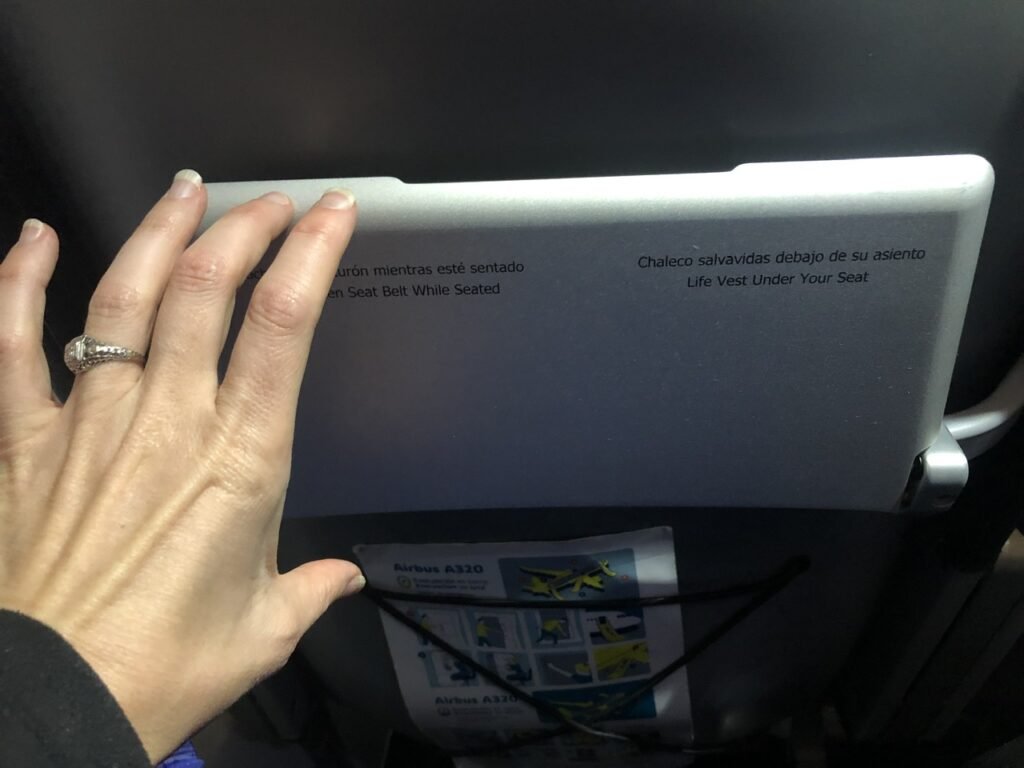
Wow! What a darling little table. Yes, it has Ryan Air beat. Good job! And…you also naturally don’t get the luxury of reclining your flimsy seat 3 centimeters, which we especially enjoyed at 3 am. Yay!!
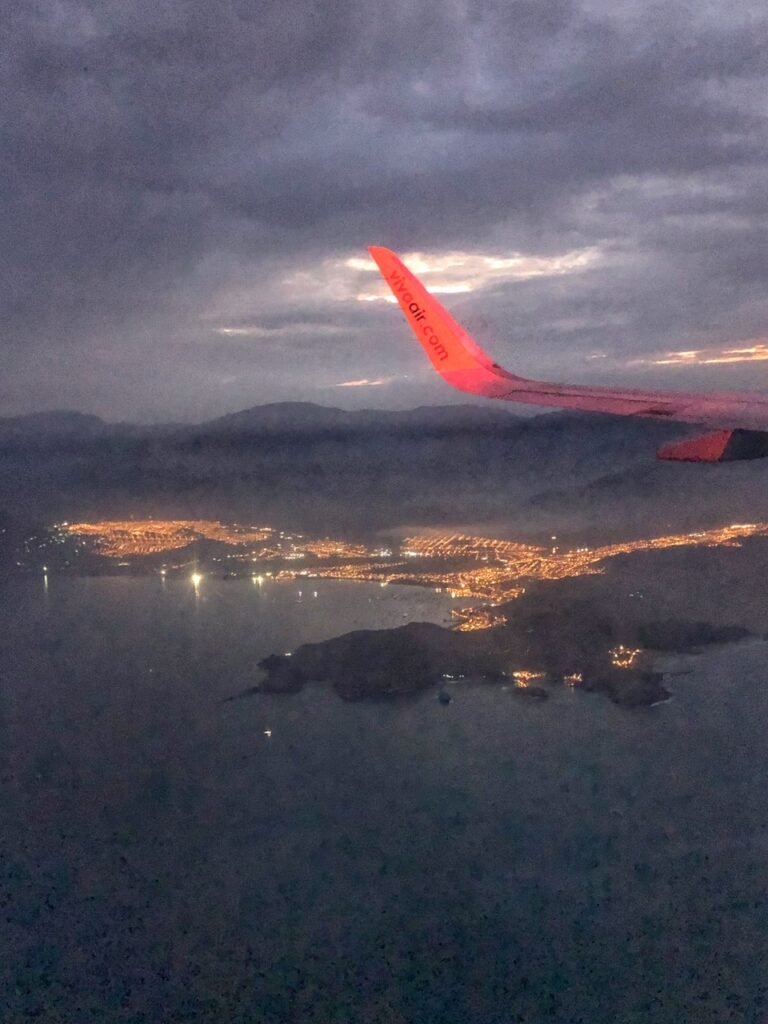
Three hours later, we touched down in Lima just before the sun peeked from the sky.
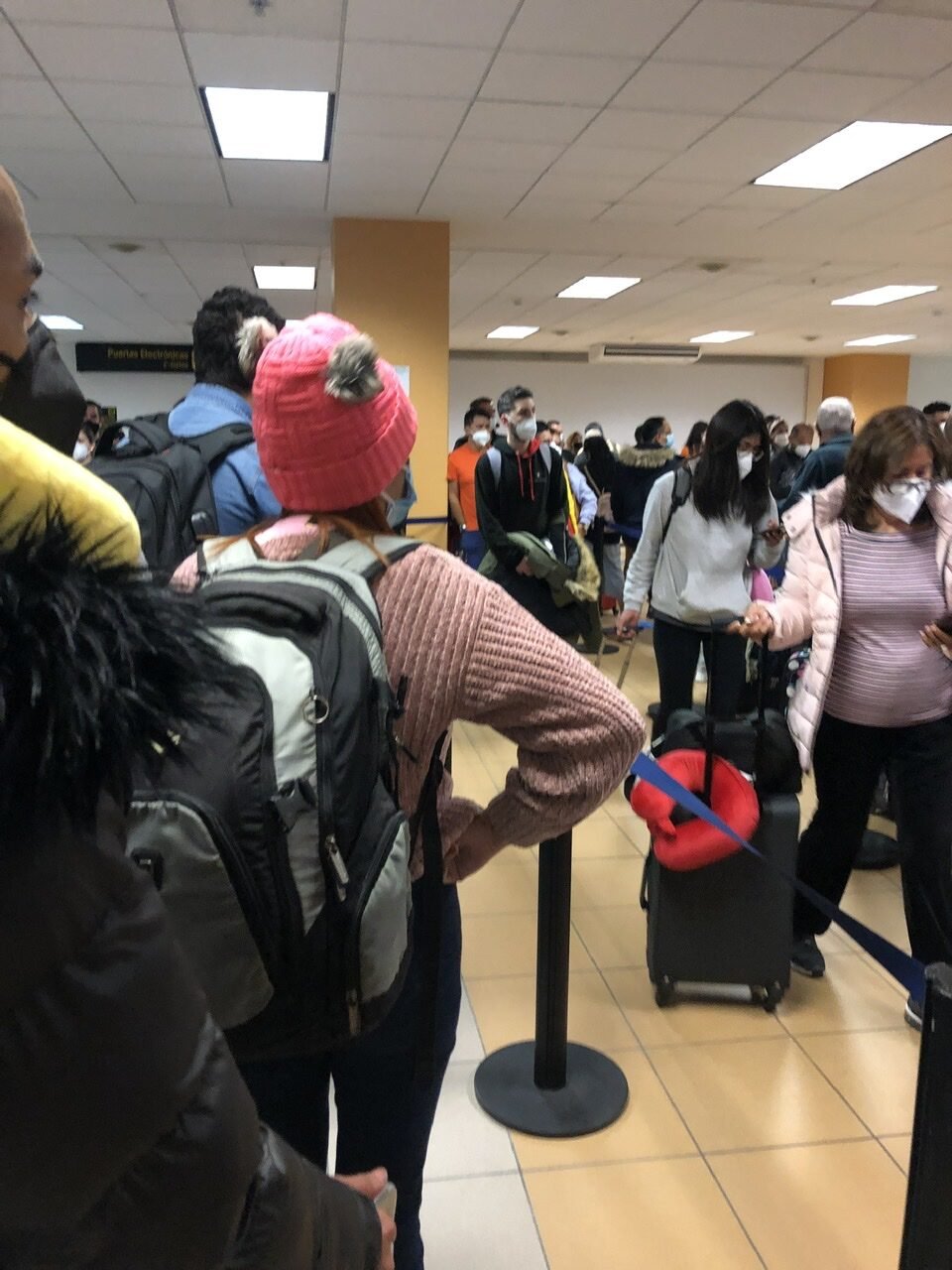
The immigration line took about 1.5 hours.

Snuggling next to each other separated by plexi glass for the day. It was like playing “let’s visit each other in prison!” And yes, despite how much we’re sarcastic and grumbling, we’re really not. We feel happy and lucky. Travel, despite its extra challenges right now, is without a doubt still worth it. Bienvenidos a Peru!! A new country for us!
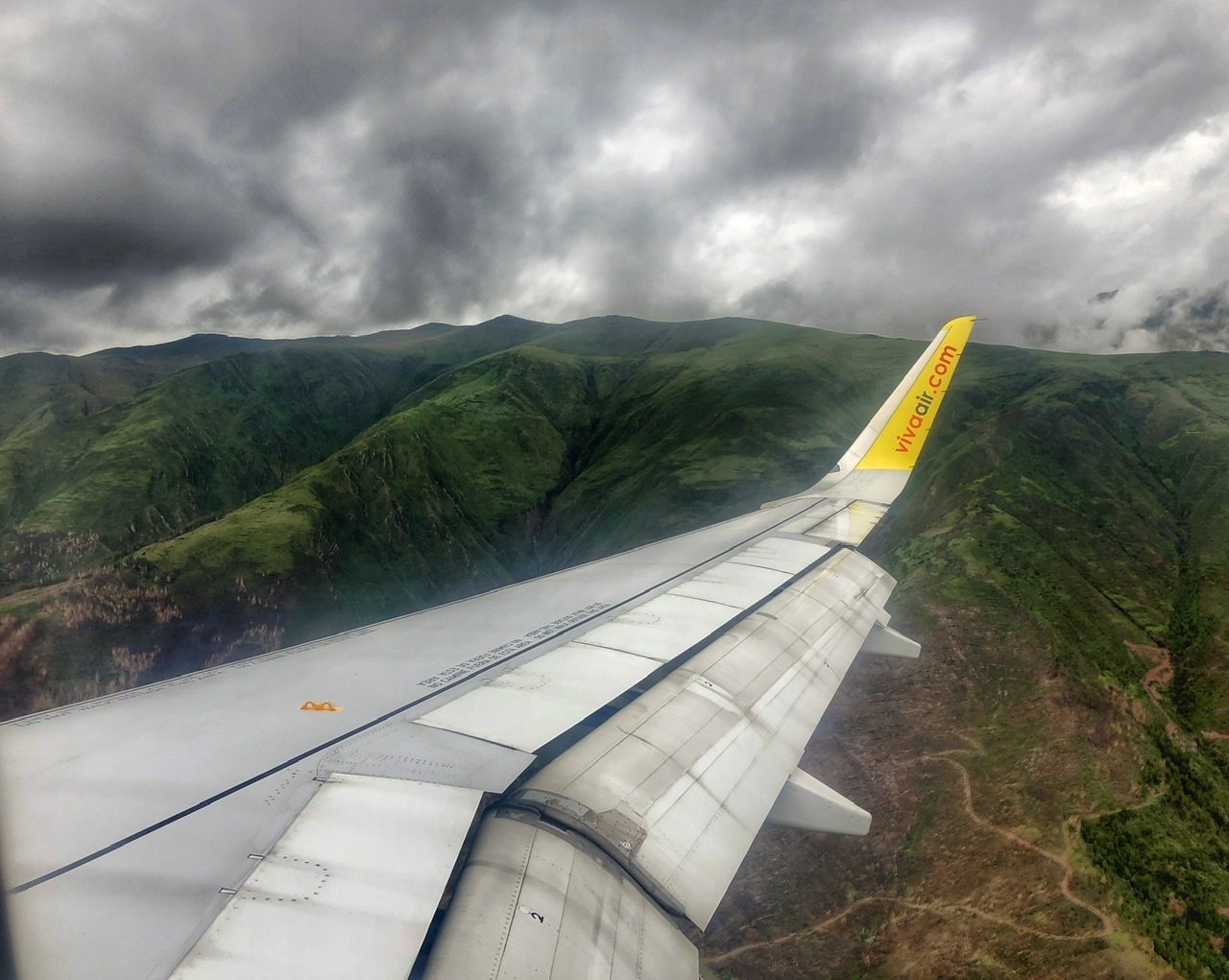
Flying into Cusco, you are surrounded by luscious green mountains that seem to be a stone’s throw away.
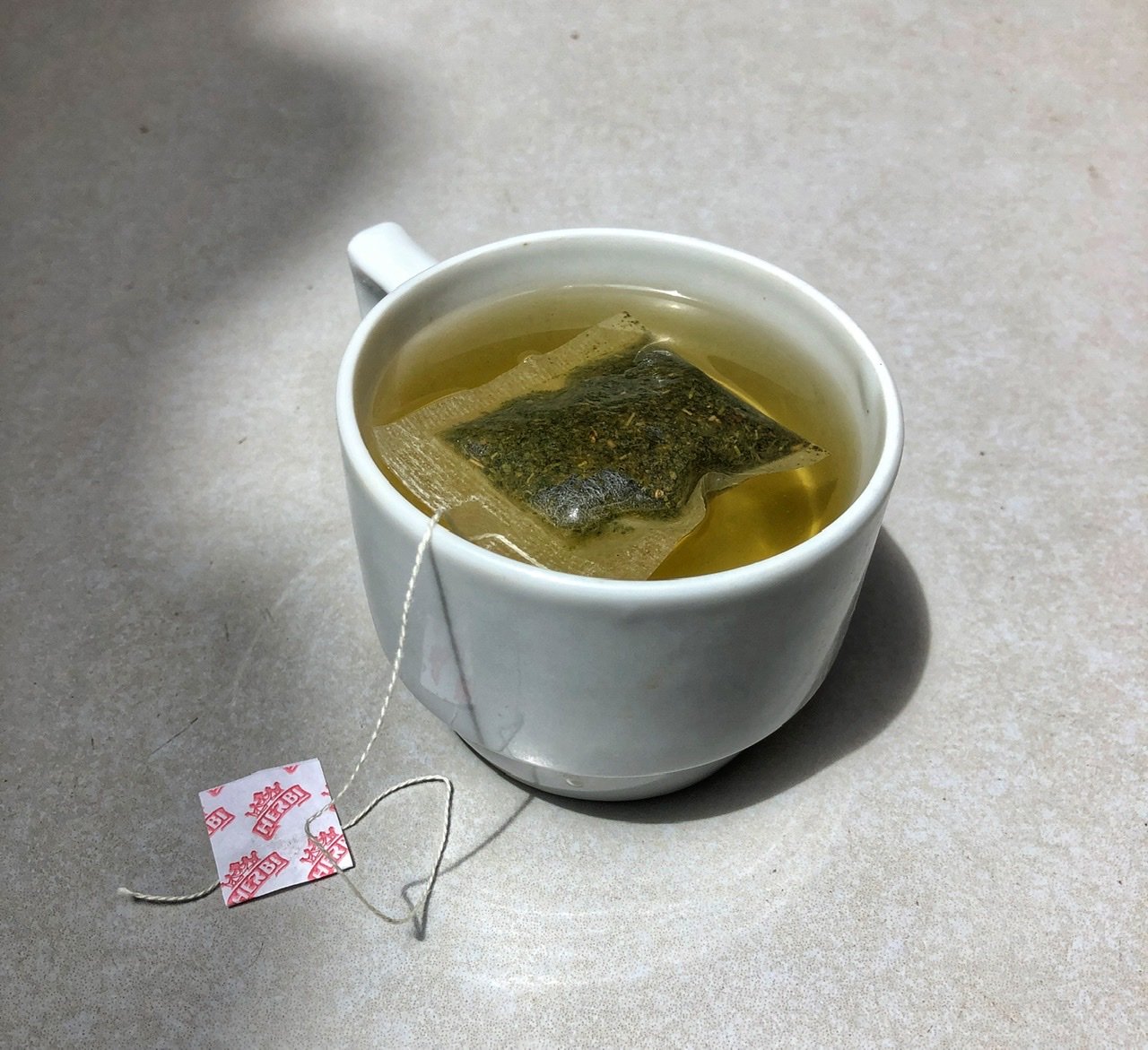
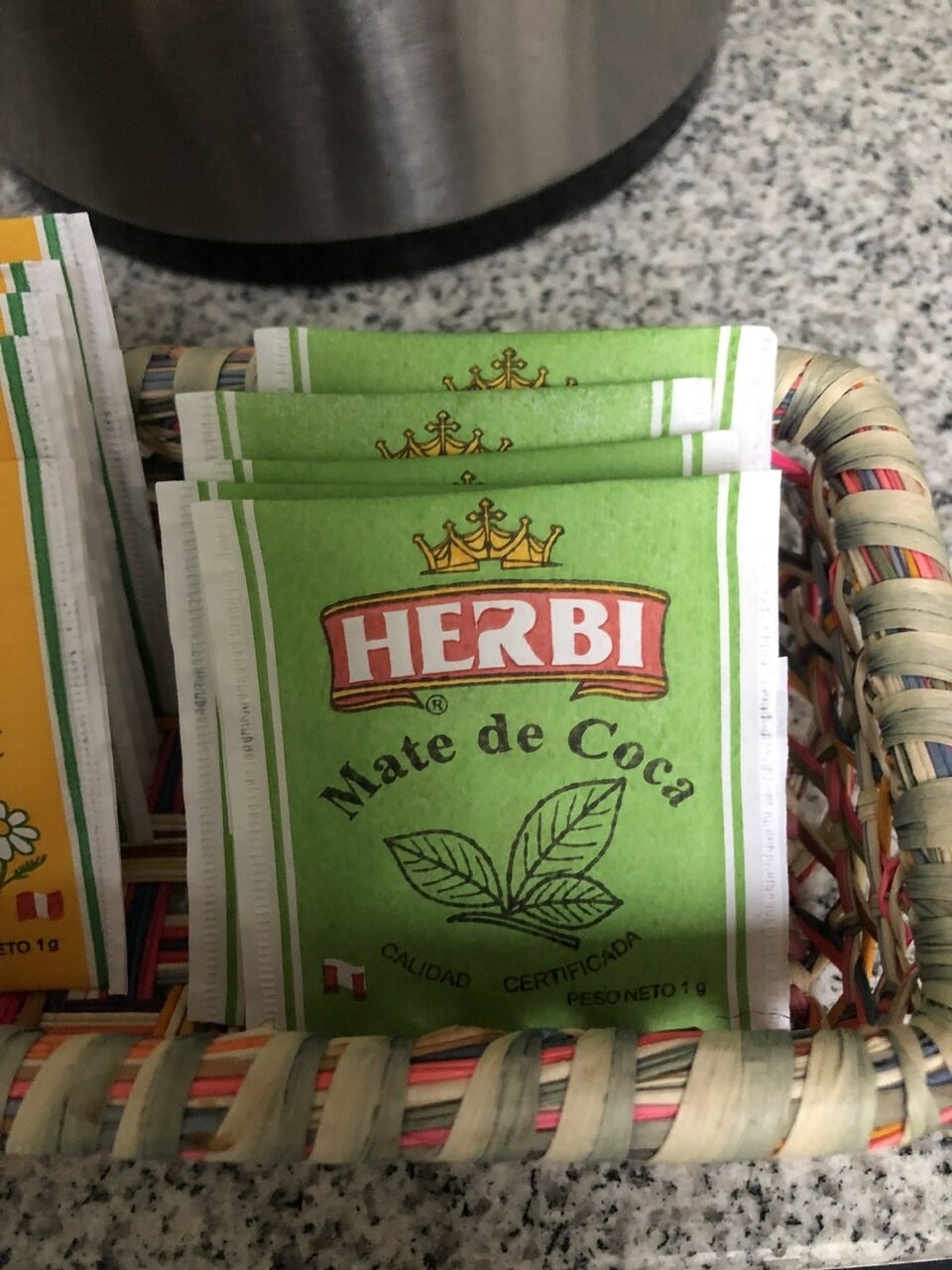
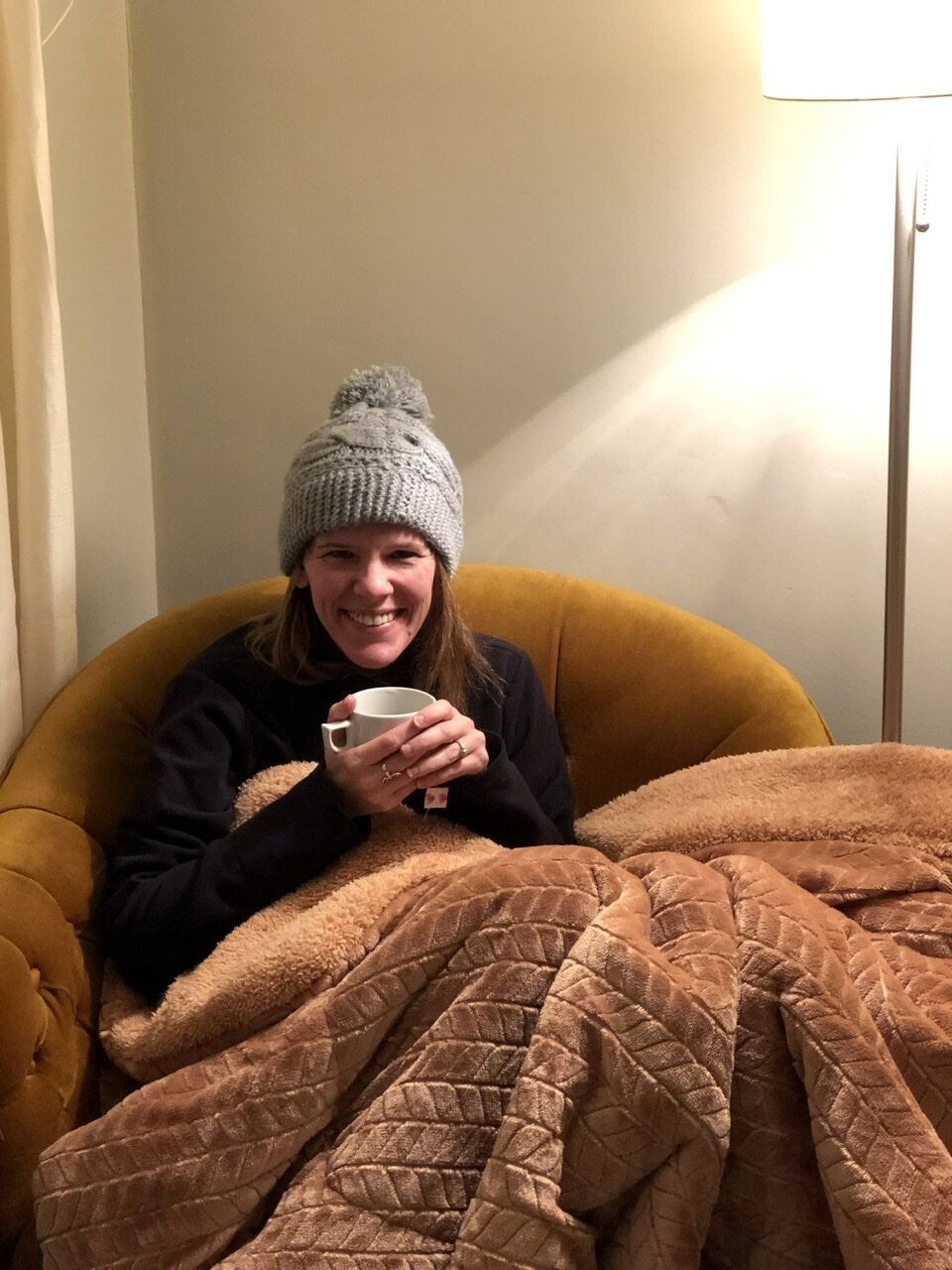
And of course, when we arrived, we immediately cuddled up in a pile of thick blankets (as there is no heat) with a cup of our first Coca tea, provided by our hosts, which is sworn by the locals to help you adjust to the altitude. This can either come in leaf or bag form. As we sipped cups of coca tea, we decided it was time to learn a few things about this fascinating, and often controversial, plant:
- Coca is a high in minerals, nutrients and essential oils. Its use is likely to give you… “a long energy boost (it did for Greg but not Mandy), a reduction of appetite (yes), a remedy for altitude sickness (unsure).”
- The coca leaf has been chewed and brewed for tea traditionally for centuries among its indigenous peoples in the Andean region – and does not cause any harm and is beneficial to human health.
- It is traditional for Andean households to offer Coca tea upon arrival to their guests.
- Because of its stimulant effect coca leaf was originally used Coca Cola. In 1903 it was removed.
- While the coca leaf in its natural form is a harmless and mild stimulant comparable to coffee, there is no doubt that cocaine can be extracted from the coca leaf. (tni.org)
On ALTITUDE: The next morning, Mandy tried to work out by doing a simple yoga routine. Within five minutes, she was much more winded than normal and her mild headache had grown, so she stopped. We spent the first day taking it easy, drinking water and avoiding alcohol as we adjusted to the 11,200 foot (3400 meter) altitude (basically like sitting atop Oregon’s Mount Hood).
Our Accommodation

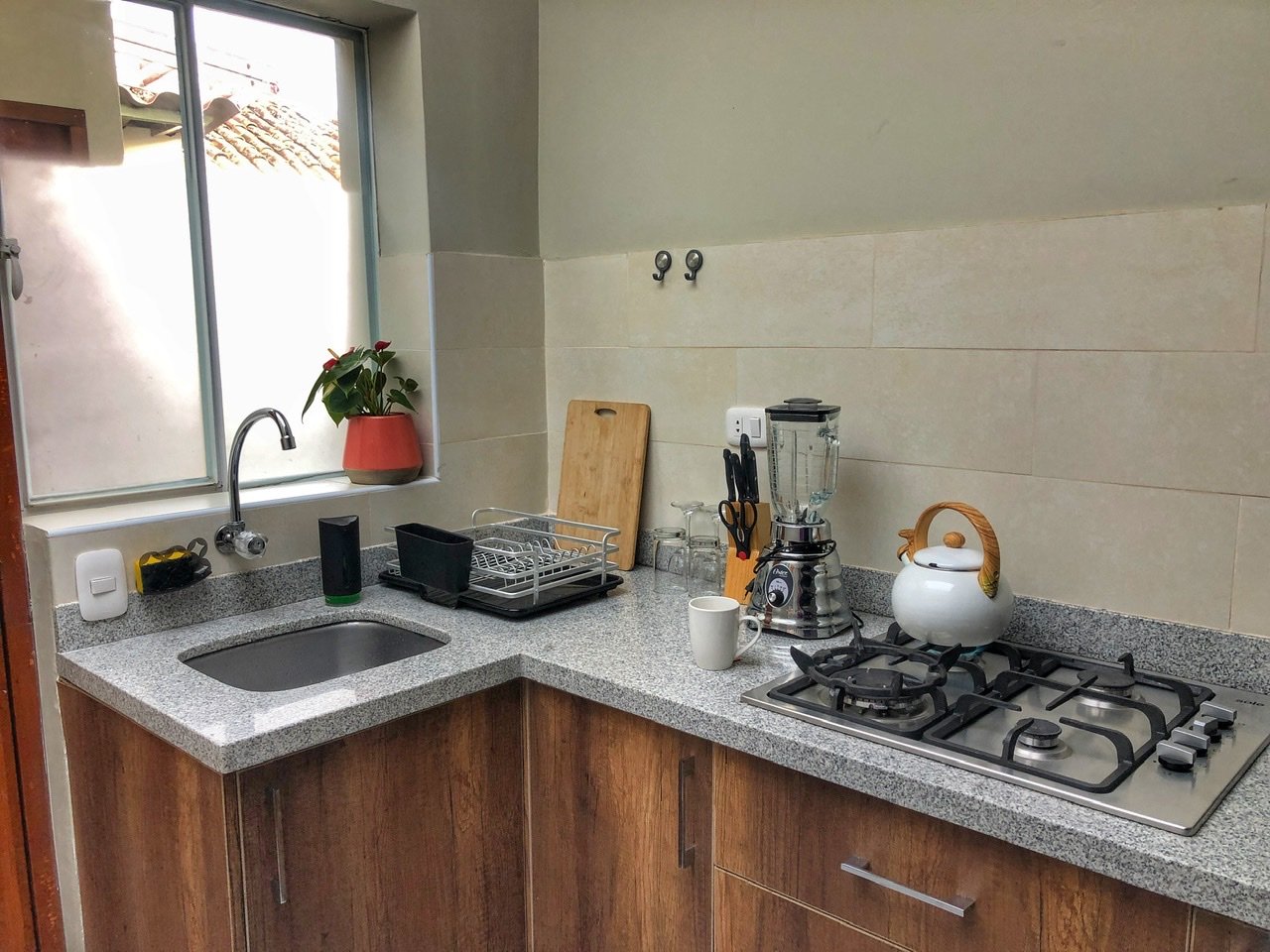

We loved our Airbnb apartment so much in Cusco that we decided to stay there three times (~$22/night). Our first two nights, two weeks a month later, and then two additional days when we came back from our trek to Machu Picchu. The host, Almicar, who was incredibly kind (and patient with our Spanish!) and also offered to hold our bags for us while away. If you want to book, you are welcome to contact him directly on What’s App at +51987188934.
The unit was a lovely, bright apartment that was incredibly quiet considering its fairly central location. (AKA NO DOGS BARKING ALL NIGHT!!) It was easy walk into the center (about 15 minutes) and included fast internet, great natural light, hot shower, an incredibly comfortable bed, and a fully equipped kitchen. We couldn’t recommend it more.
Exploring Cusco

Bienvenidos a Cusco…the archeological capital and oldest continually inhabited city in the Americas. Living in Cusco in the Peruvian Andes is like living in a ruin. And how couldn’t it be? This UNESCO world heritage city was capital of the Incan empire from the 13th to mid-16th centuries. Everywhere you cast your gaze, the colossal ancient Incan walls envelop you and are a constant reminder that you’re in the undisputed archeological capital of the Americas, (even if said walls are protecting the baristas of a Starbucks or chicken legs in the KFC.)
According to legend, in the 12th century, the first Inca king was ordered by the ancestral sun god to locate a spot where he could plunge a golden rod in the earth until it vanished. This spot, deemed the navel of the earth, became Cusco, the flourishing site of the Americas’s greatest empire. And which later became the site of one of the greatest tourist meccas in the Western Hemisphere…Machu Picchu.
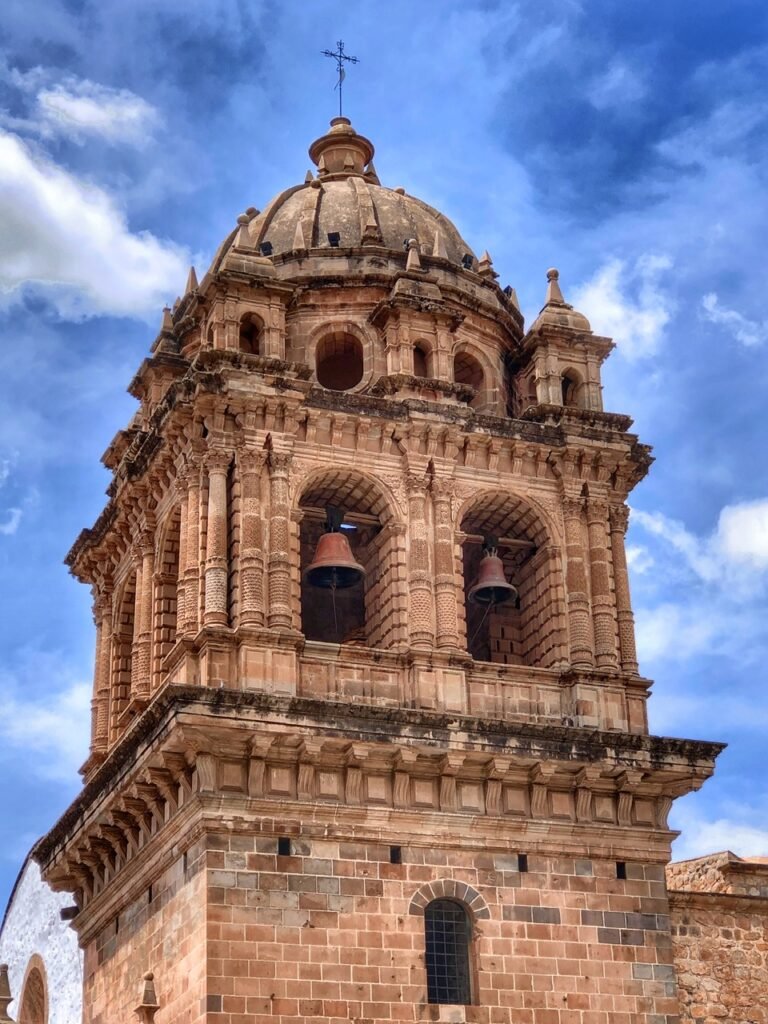
In this city, elaborate cathedrals plopped by the colonizing Spainards, crouch over Incan temples and lovely ladies with decked-out irresistible baby llamas who stroll the streets hunting for unsuspecting and vulnerable tourists. It’s the epitome of a tourist haven that is springing back to life nicely after the pandemic. And we’re happy to be visiting now…before it inevitably gets really busy…again.

Some of the beautiful balconies in Plaza de Armas, or the main square. To us, they surprisingly seemed a bit Asian.
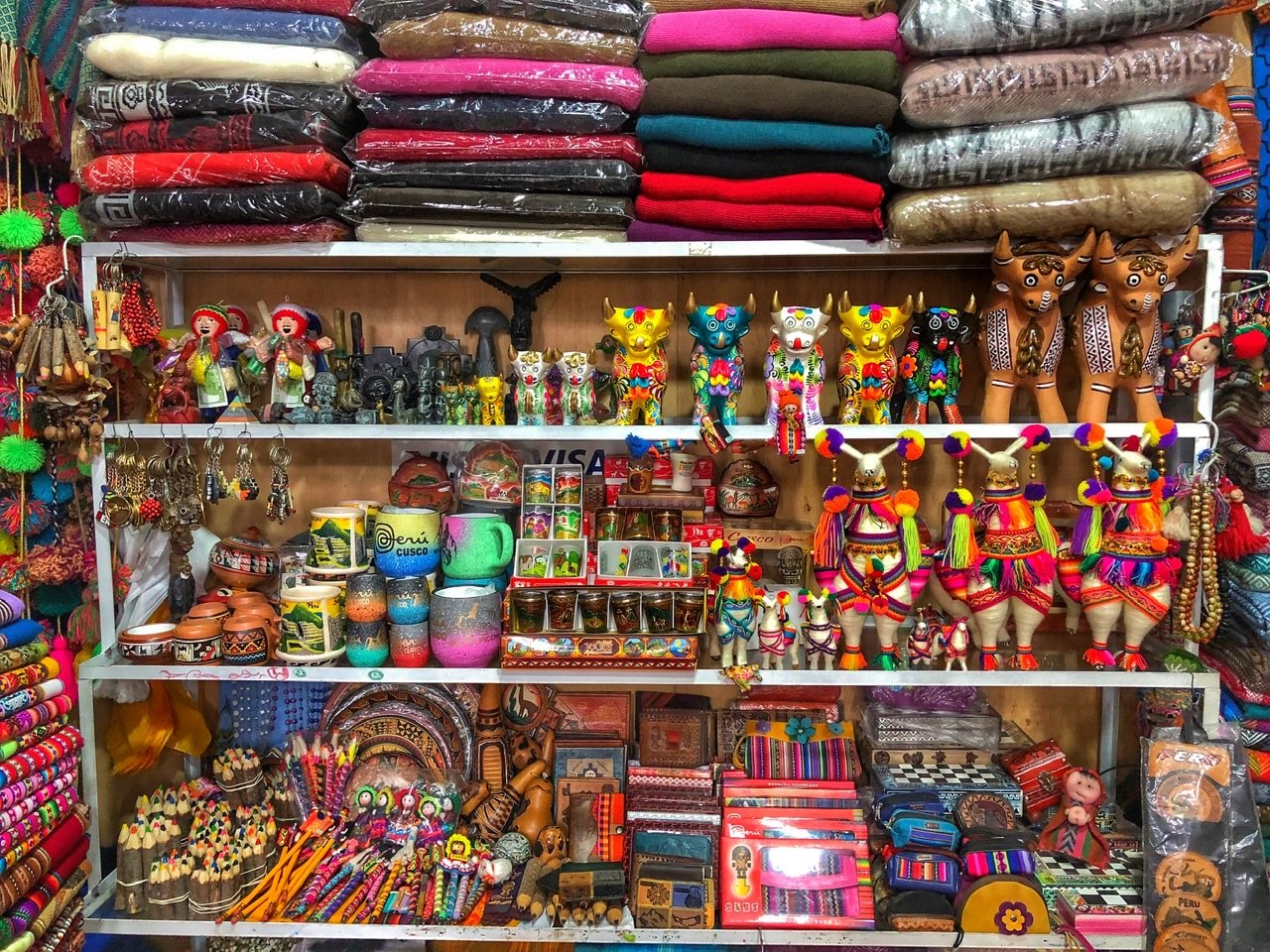
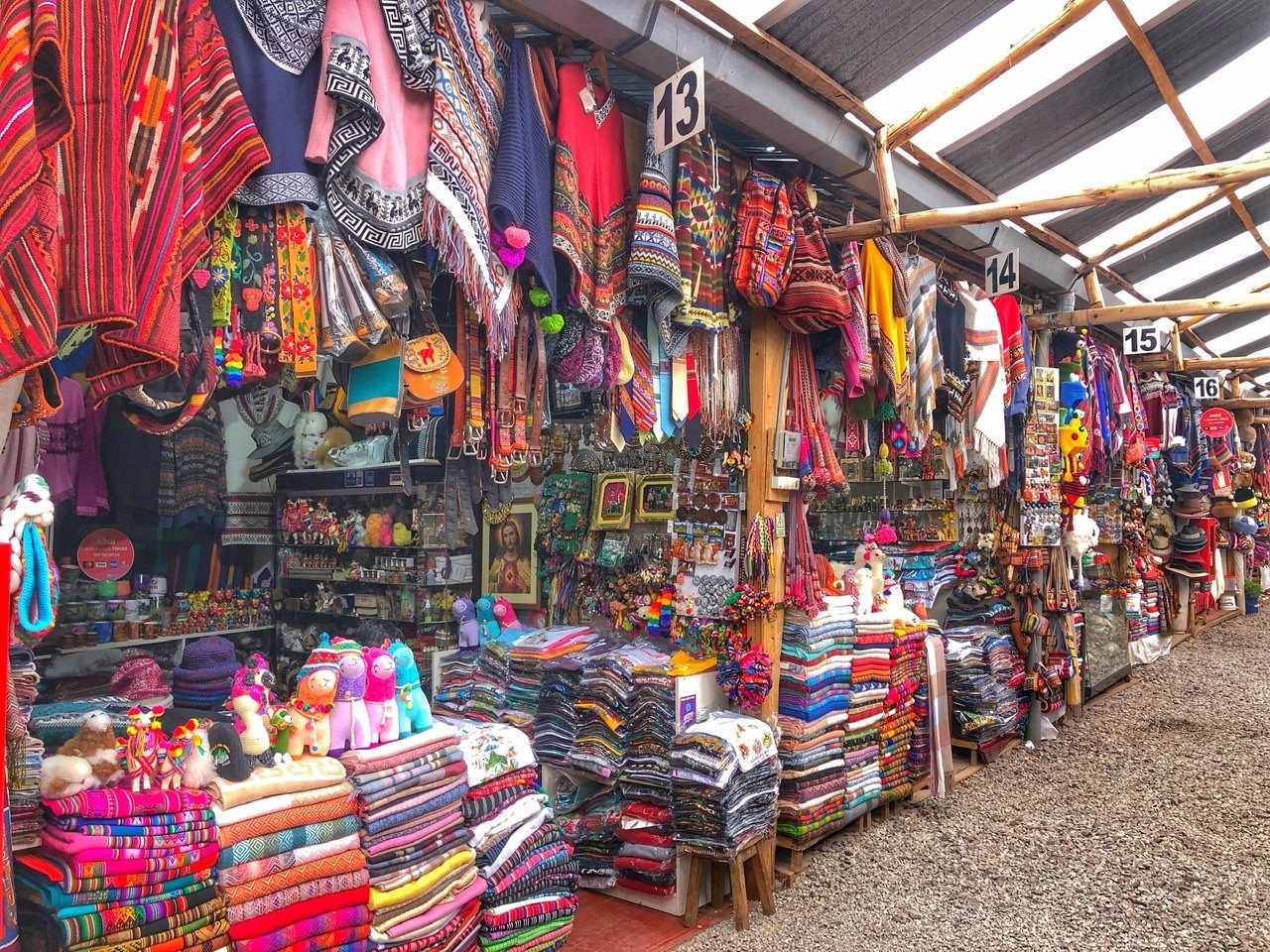
Hitting the mercados in Cusco is an absolute necessity. The selection is amazing and we only wish we could buy a whole lot more!

Mandy did manage to get llamafied right away with a new hat ($4), gloves ($2) and an “alpaca” sweater for $8. She’s ready for Peru. We also scored some trekking poles for $10. We were more than ready to hit the trails!

The sweet lady we bought the “alpaca” sweater from for 30 soles ($8). She claimed it was alpaca and all natural dyes. After two months of wear, it was still in good shape, so it seems like it was a good deal.
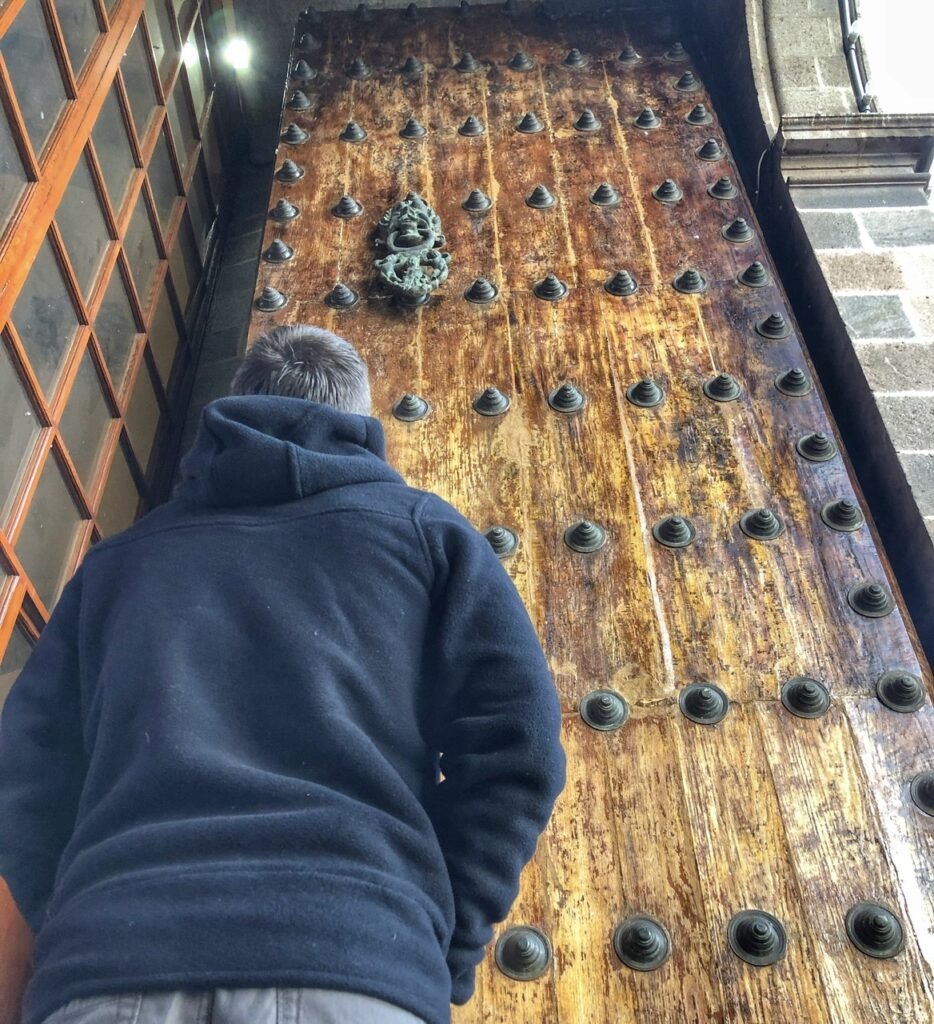
Greg contemplating an impressively hung door.
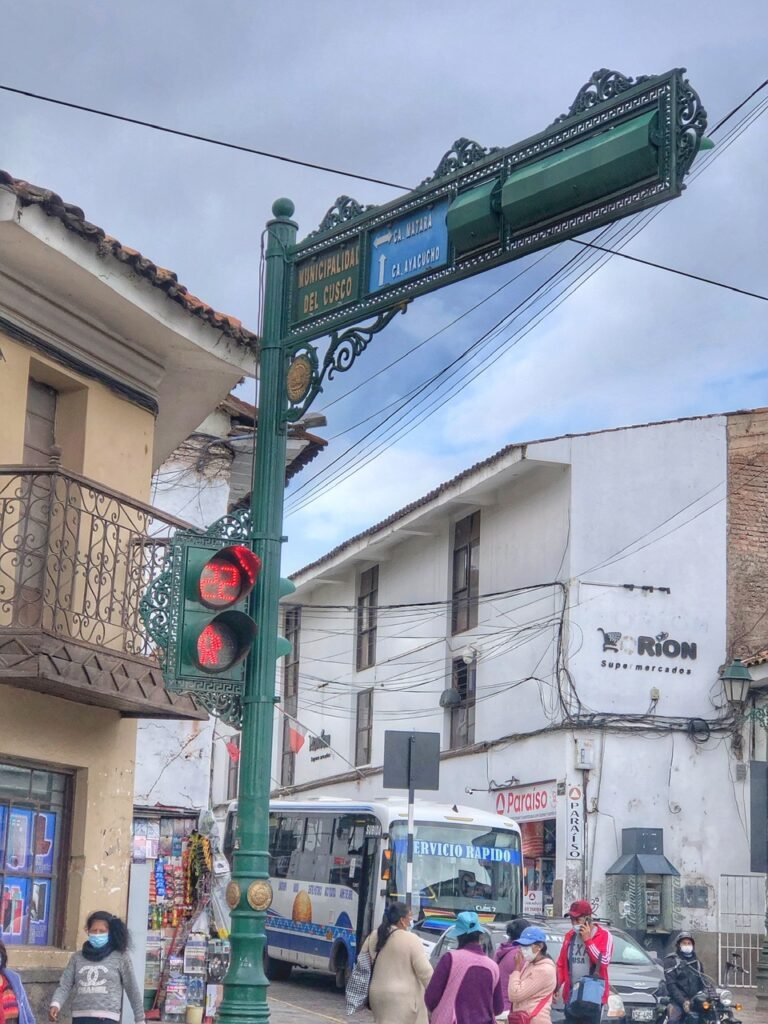
Loved the antique and intricate street signs. By the way, walk with caution in Peru. Pedestrians do not seem to have the right of way, even when a crosswalk indicates a green walking man. We can’t tell you how many times we almost got run over because people that are turning right refuse to acknowledge pedestrians.
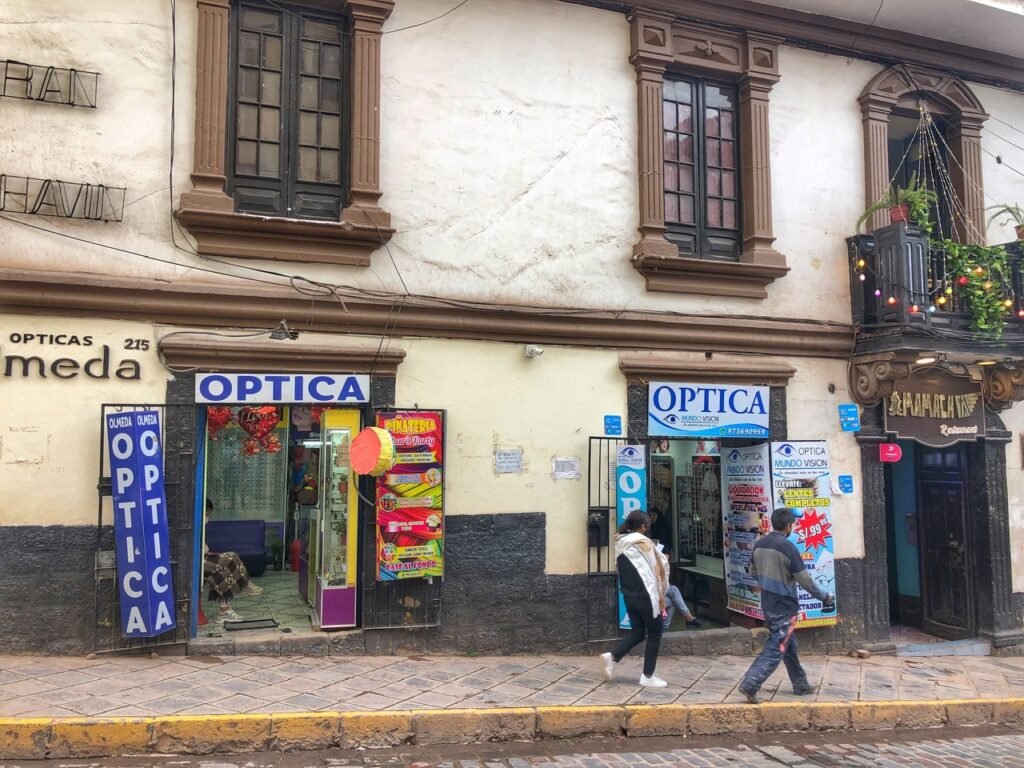
This has had us scratching our heads for awhile so we’re finally going to mention it. One thing we’ve noticed in so many Latin American countries is how they group all similar businesses onto one street. Now, this makes a lot of sense if you’re shopping for say, a lamp or a shoes and you want multiple shopping options. However, it doesn’t make a lot of sense if it’s ópticas like on this street, or banks on another. I mean how many eye appointments or banks do you need in one area and you can’t find them anywhere else? Spread them out! Just a peculiarity and we can’t figure out why they do this. ?

More Peruvian goodies sold by many street vendors.
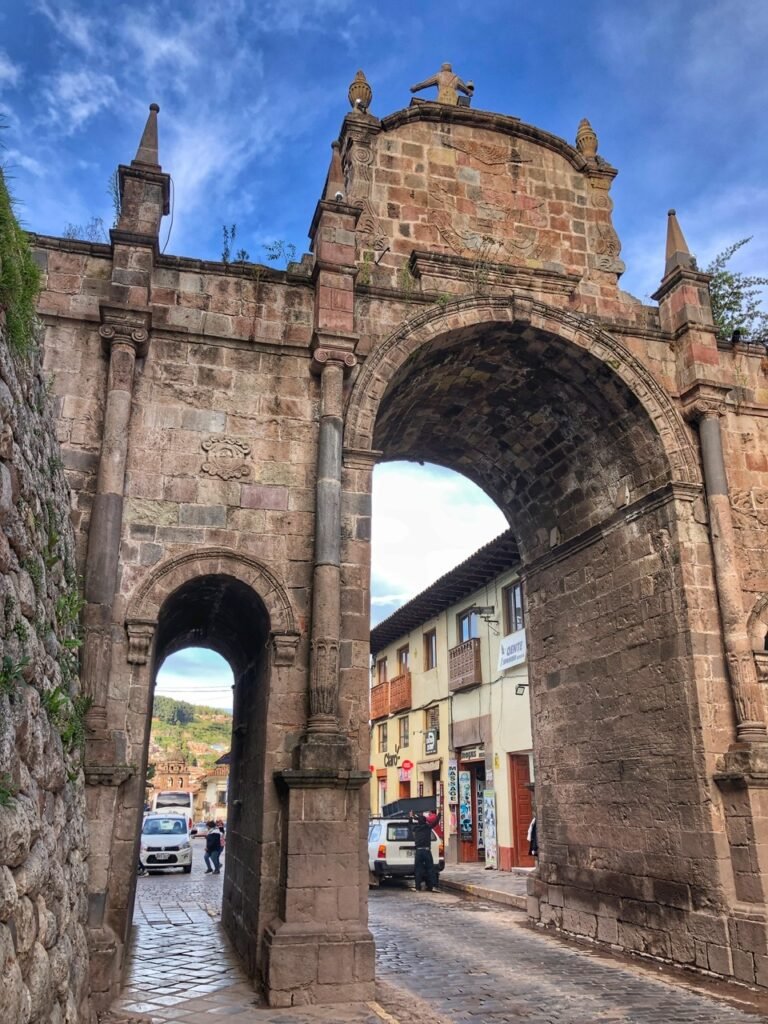
One of the stunning stone gates entering the historic center.
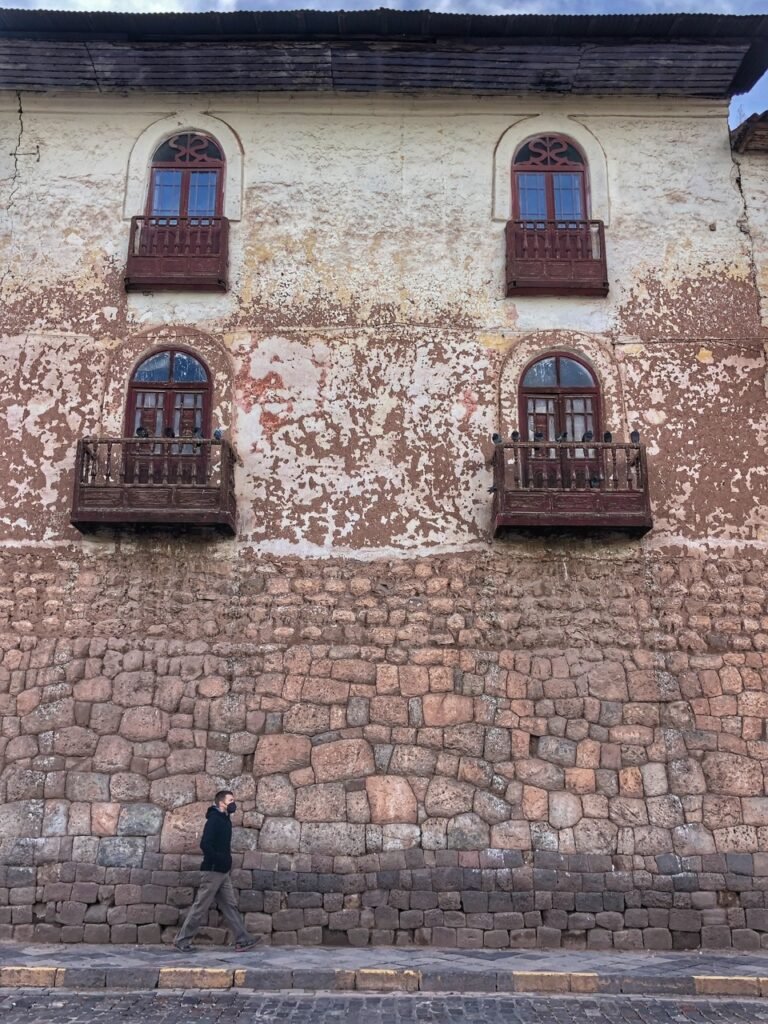
Greg looks so tiny next to this massive stone wall!
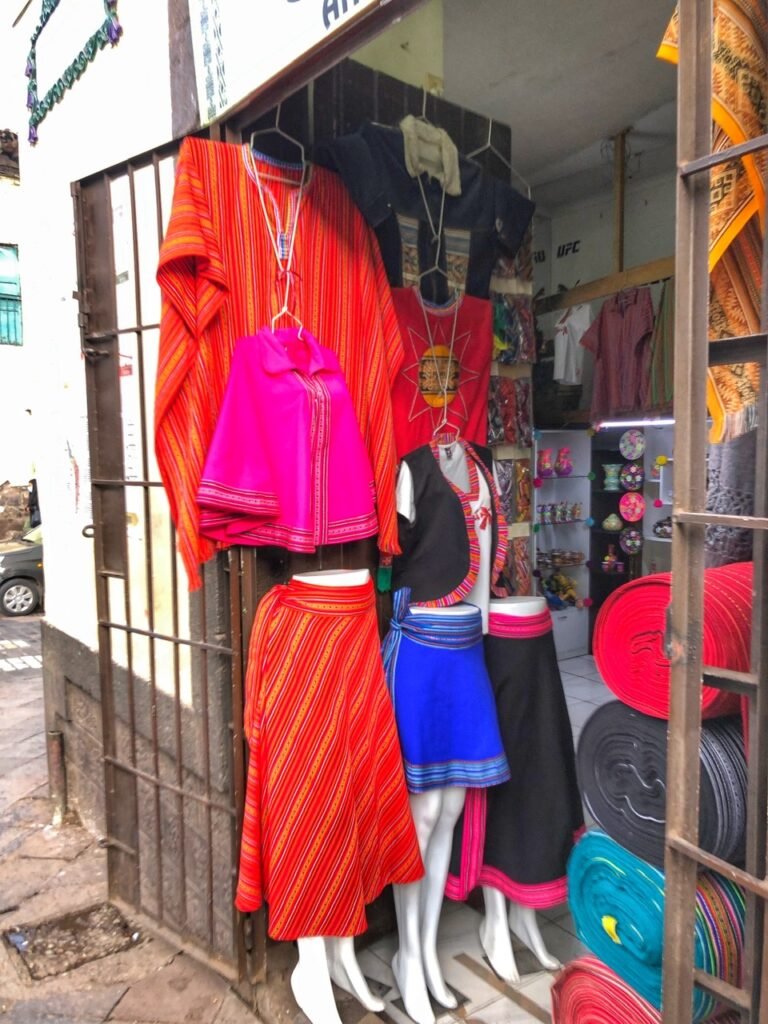
Oooo….Mandy might need one of these in the future!!

Cobbled street scene heading into the Plaza de Armas.
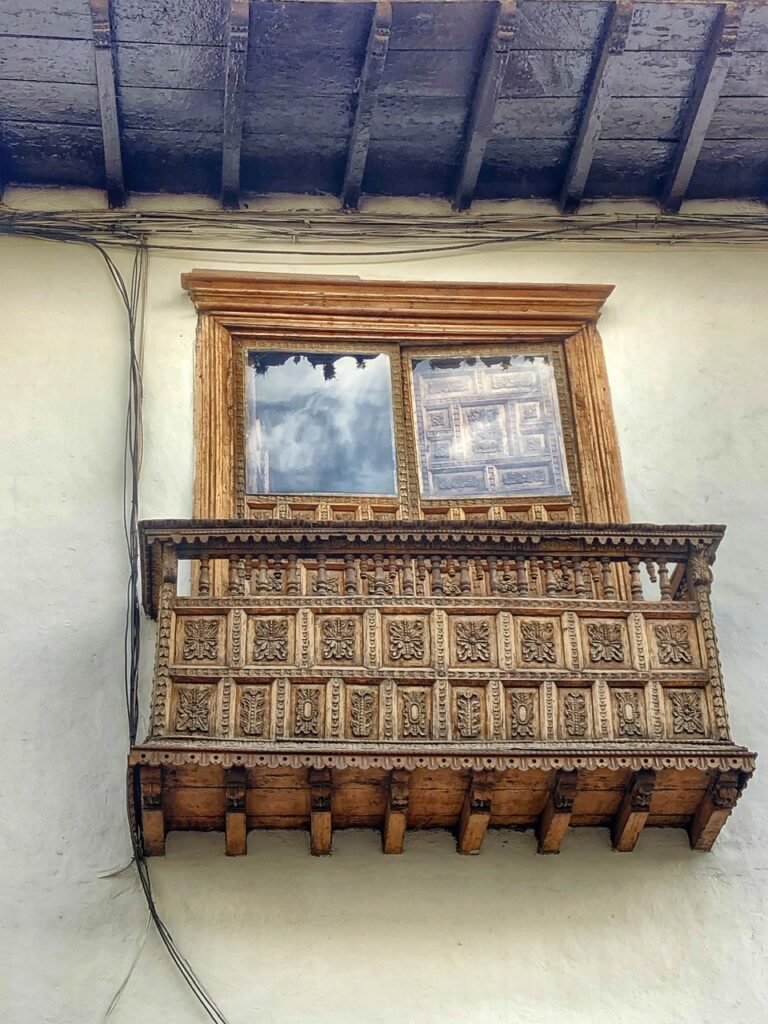
A close up of one of those balconies.
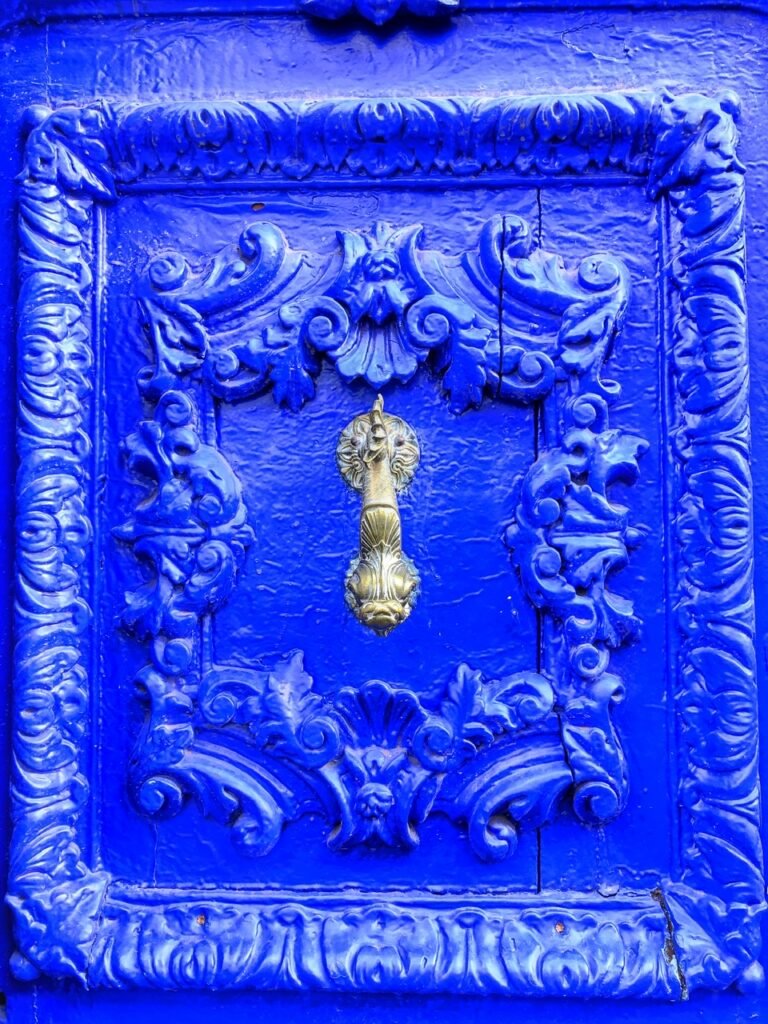
Now that’s a knocker!!
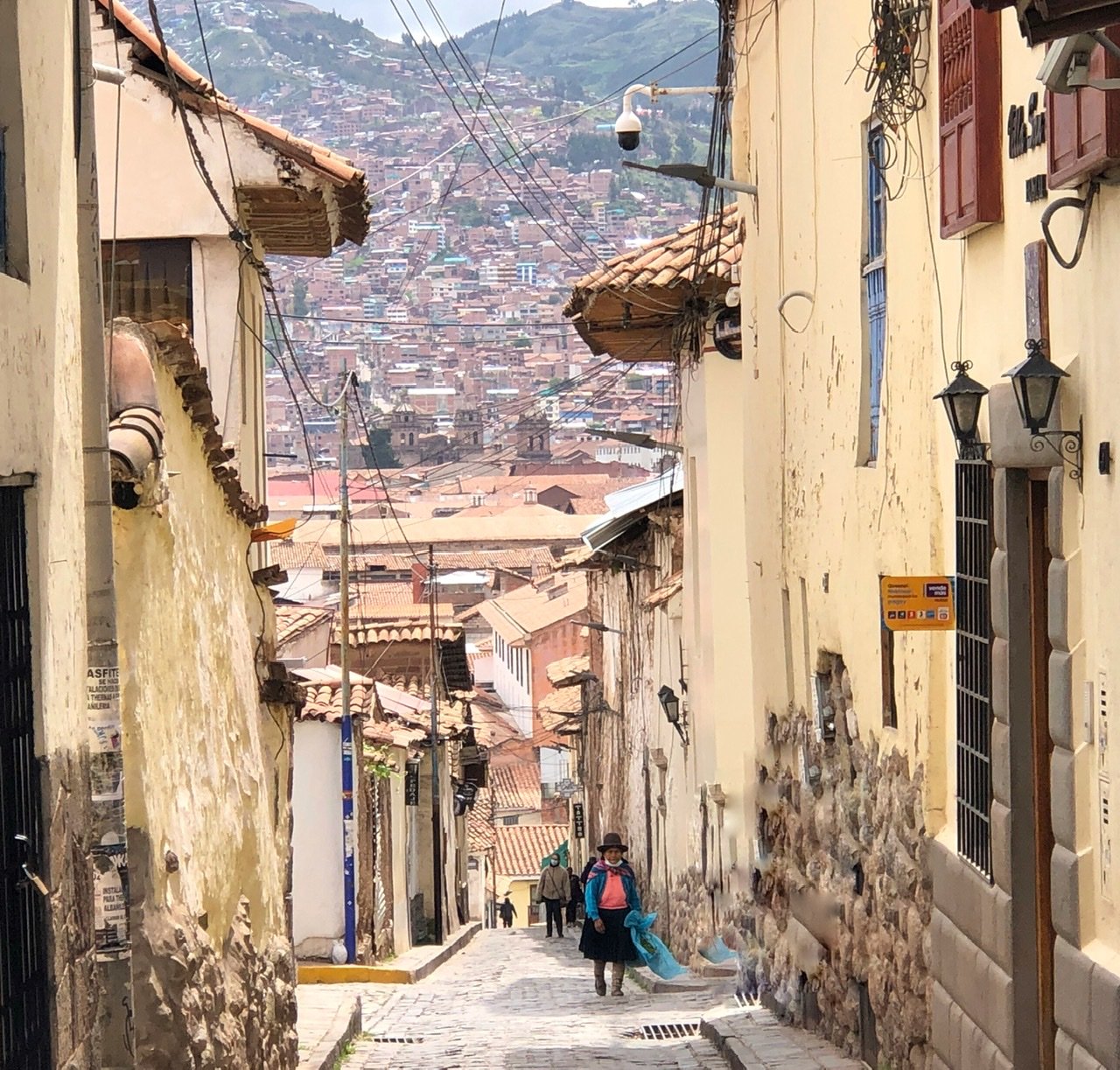
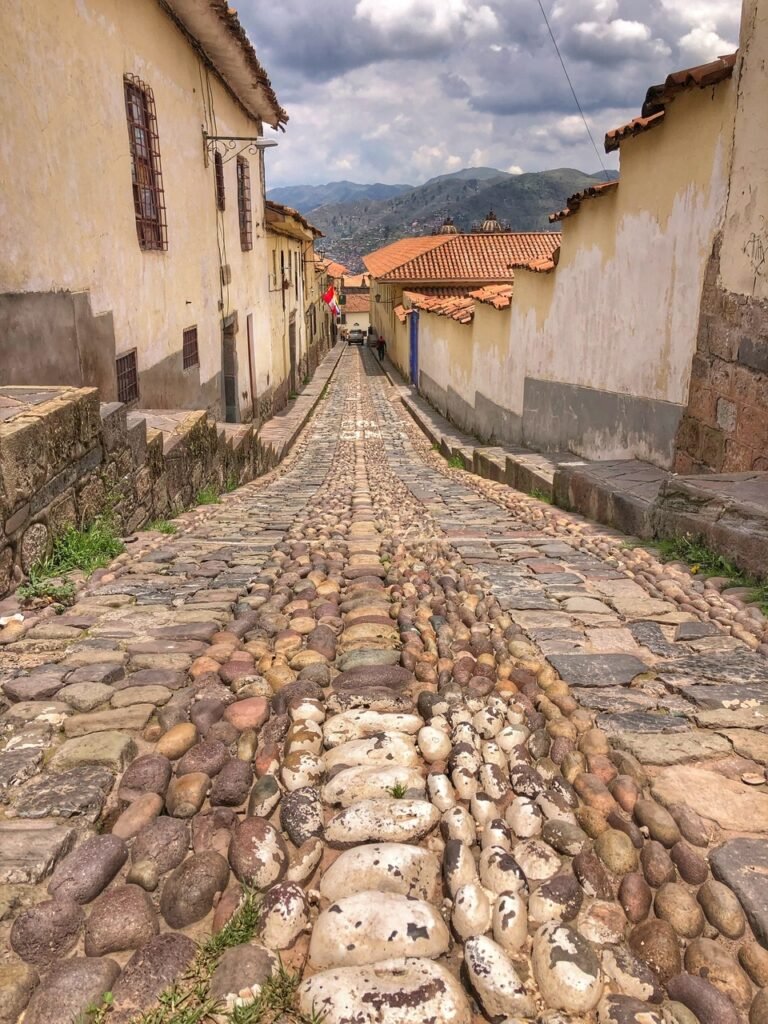
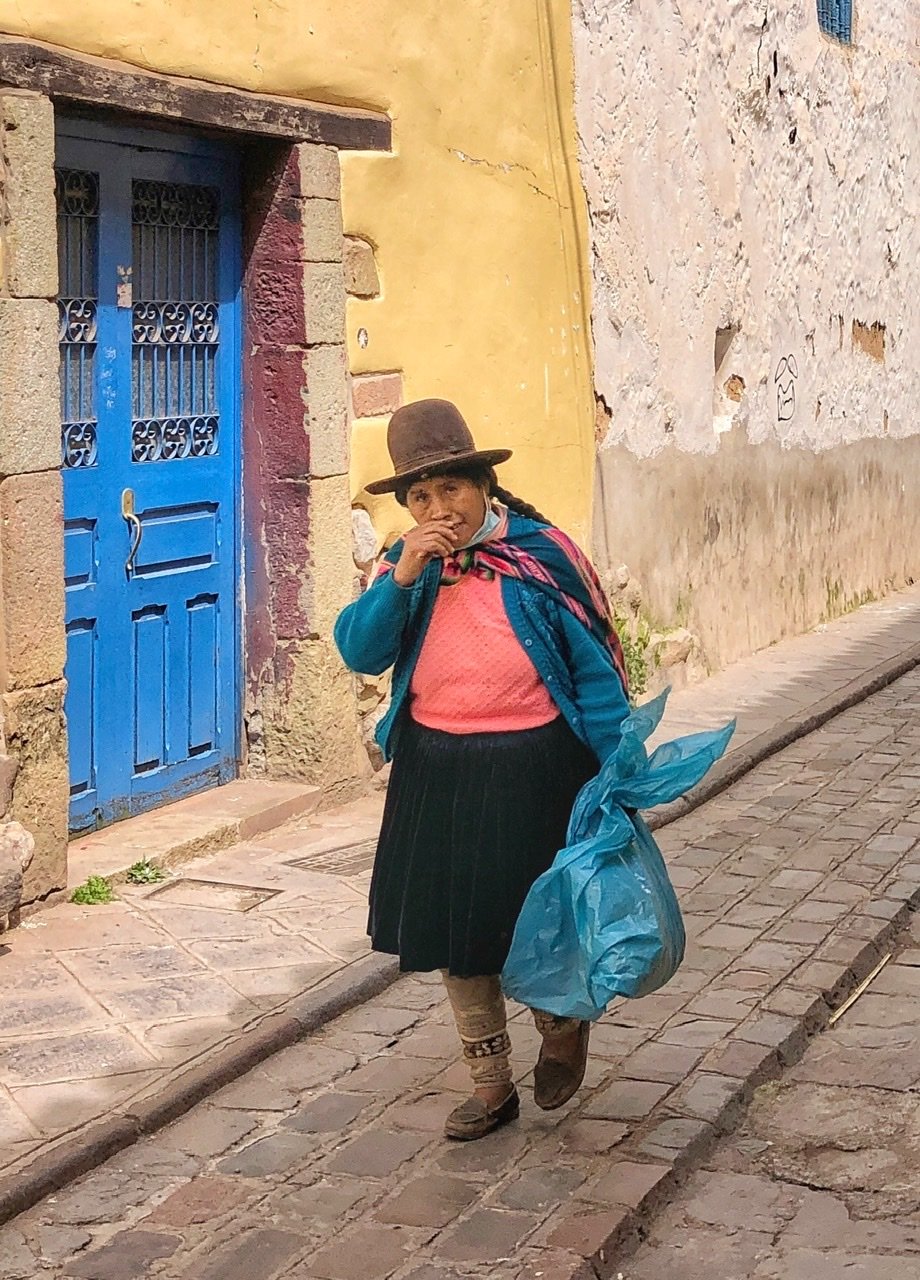
The higher you go, the more stunning it gets.
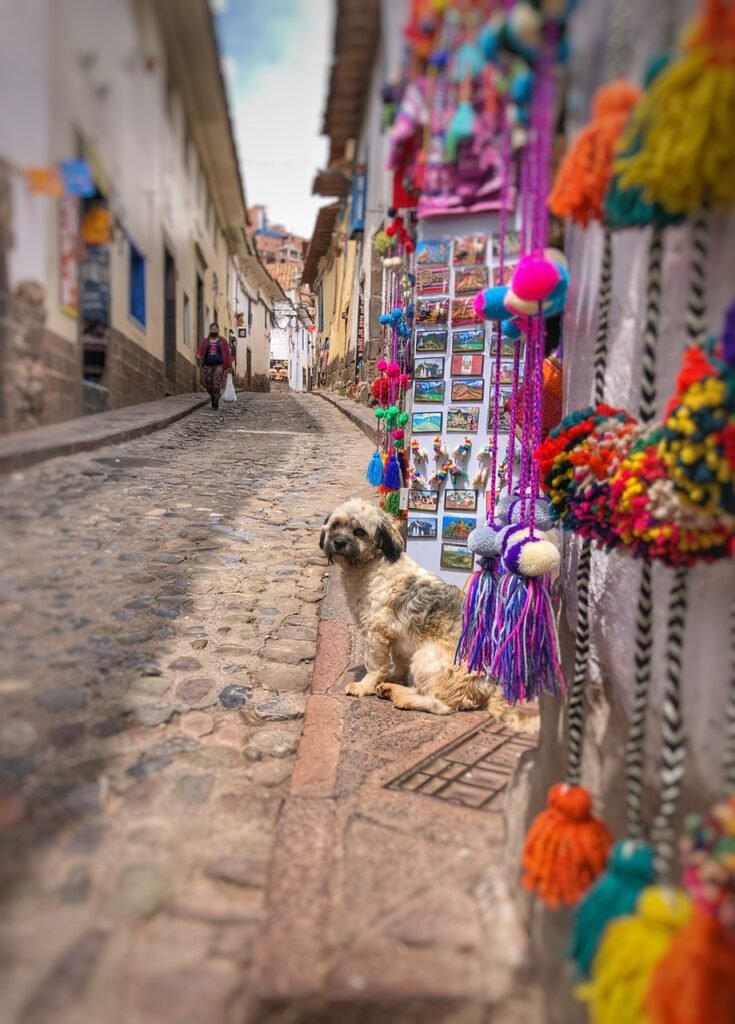
And of course, there are the pups….some loved and taken care of. These are the ones generally wearing clothes. Others, sin clothes and living the hard life.
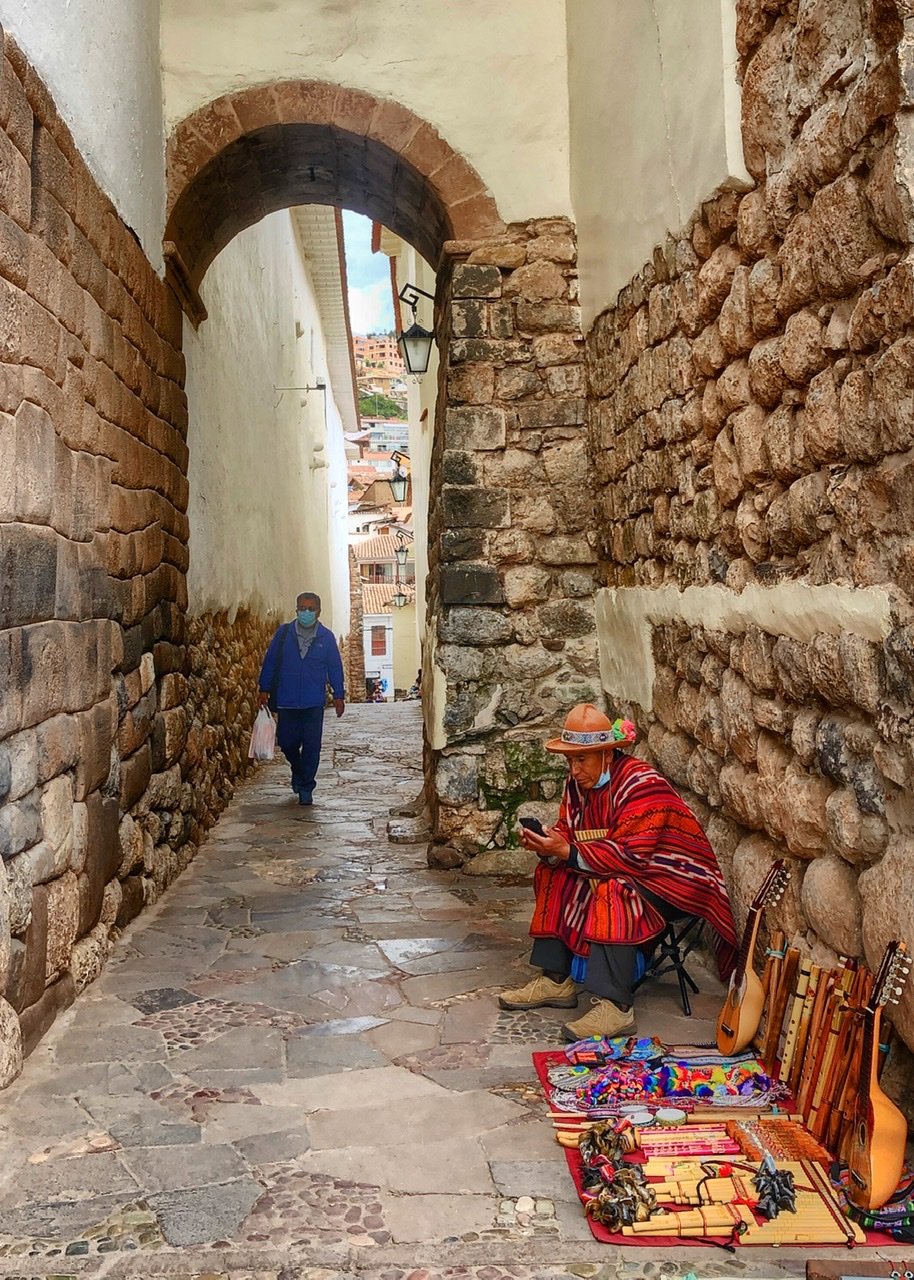

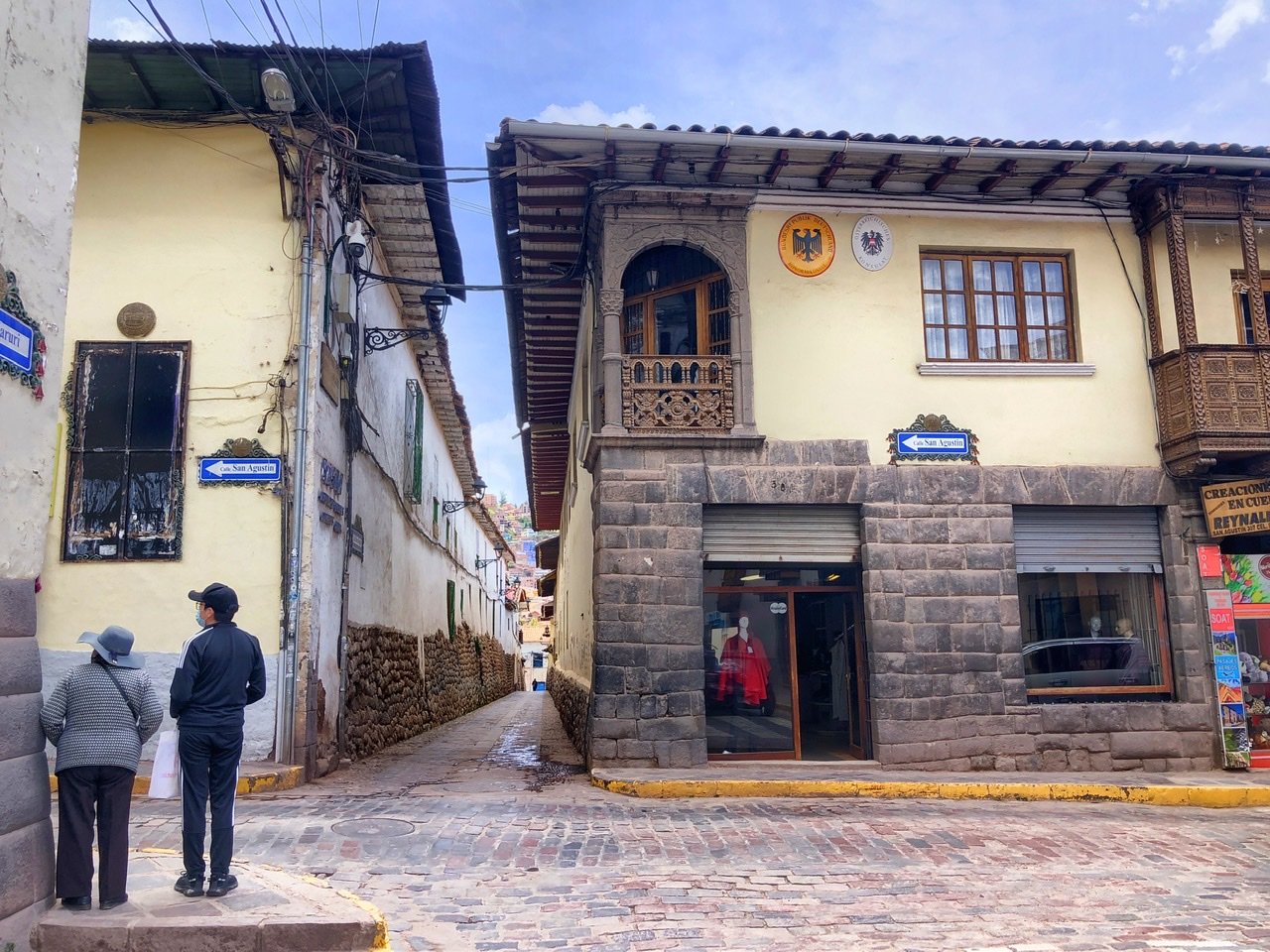


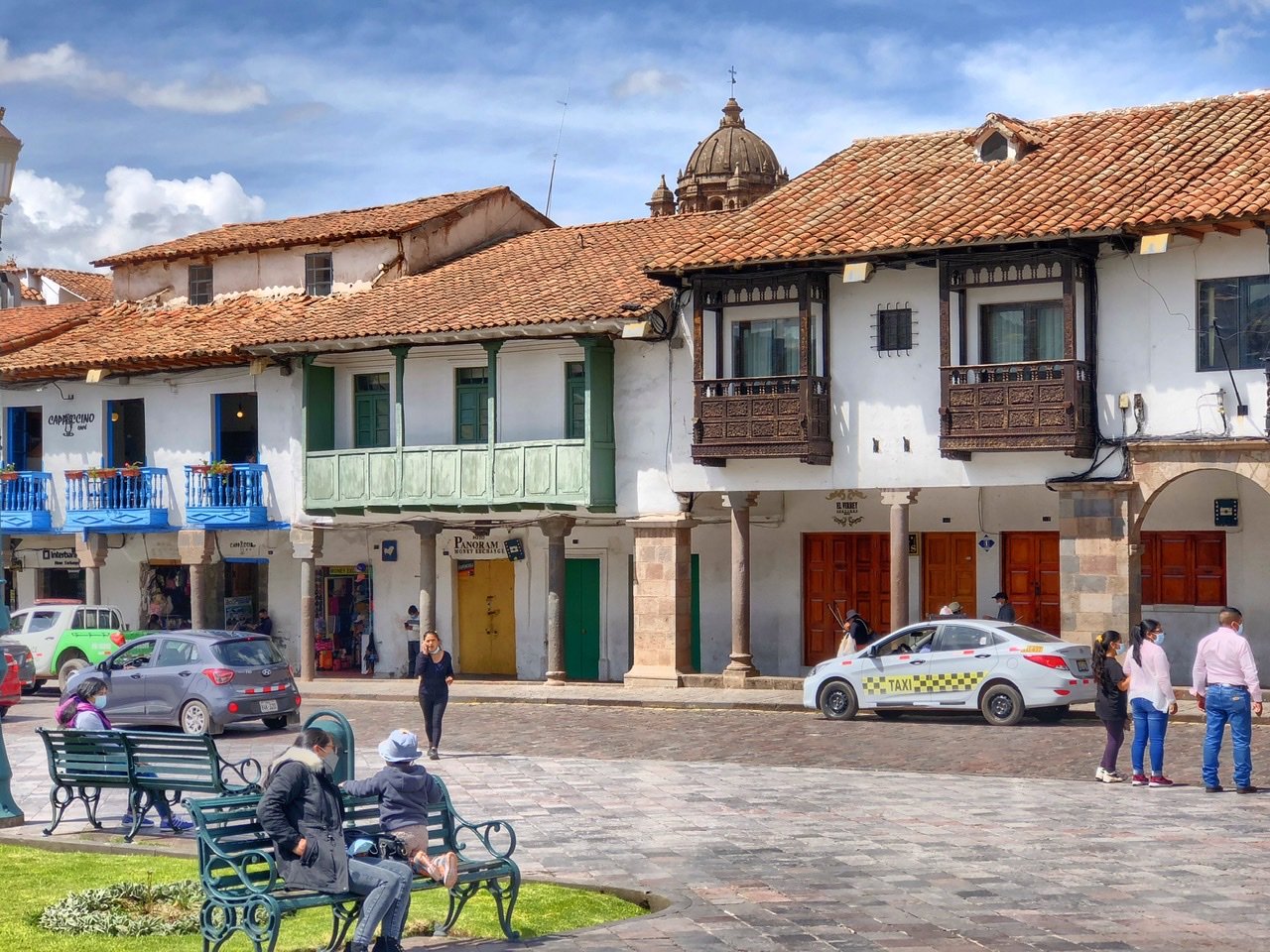
Other photos around Cusco.
Plaza de Armas
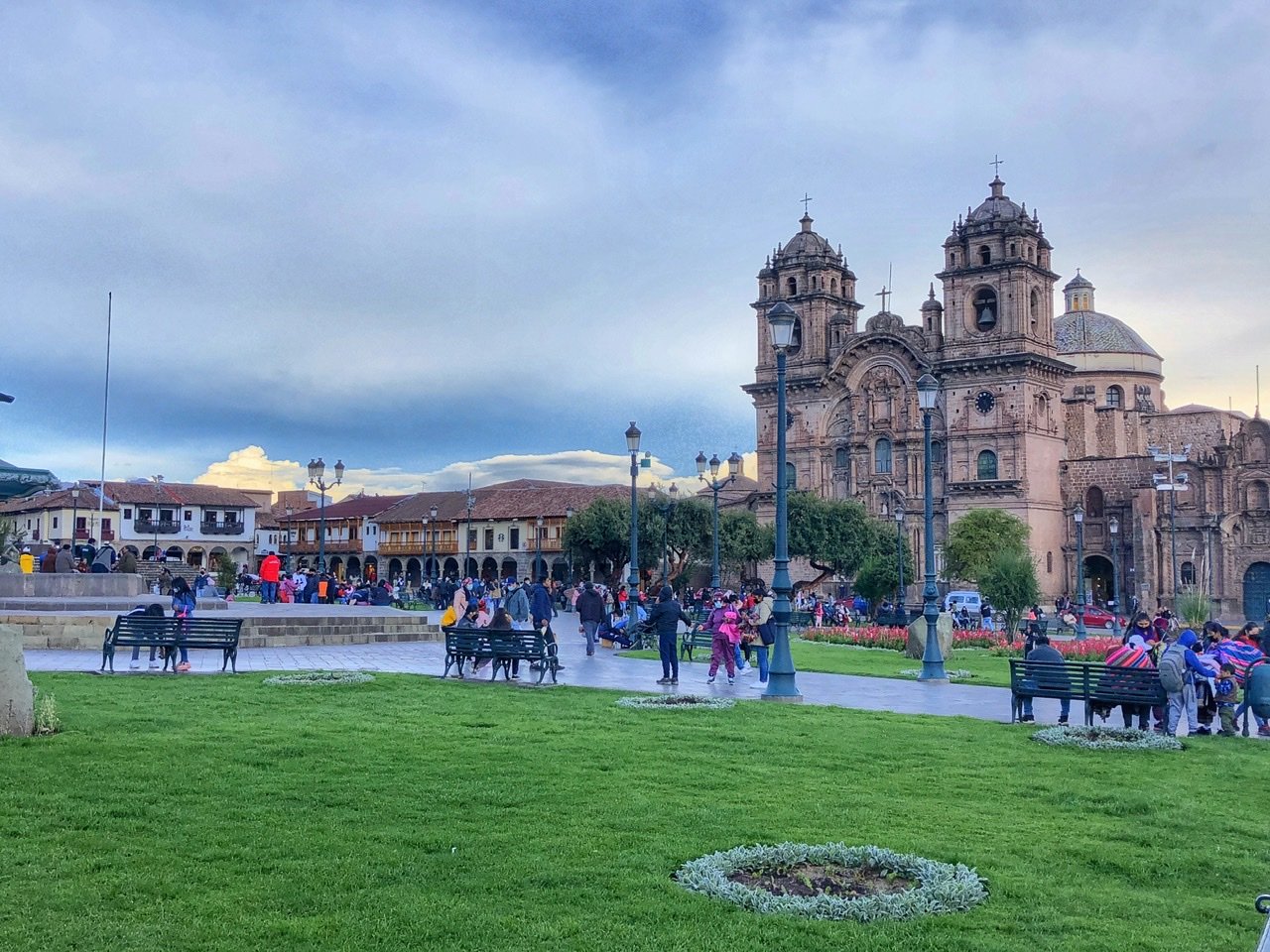
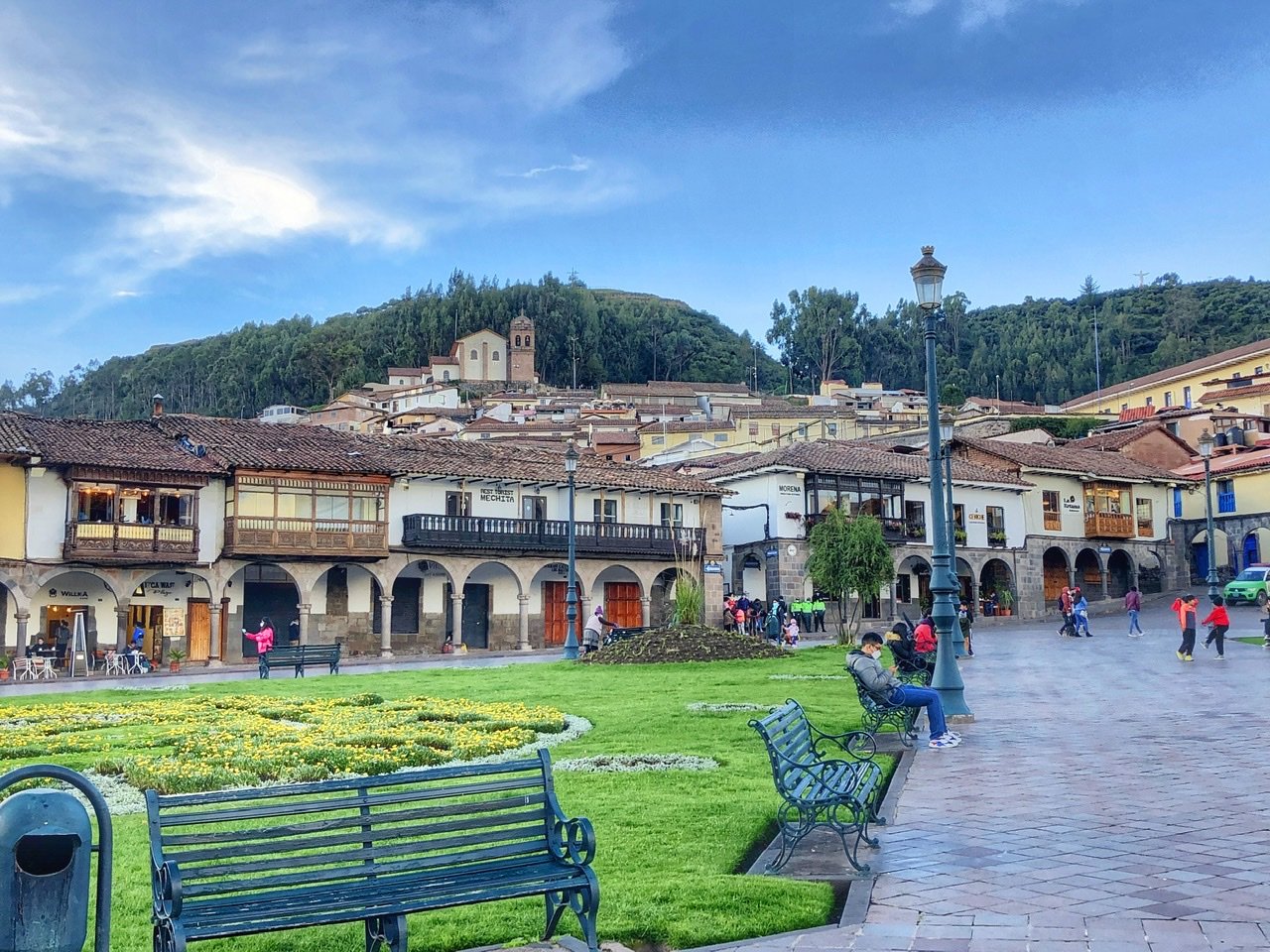
In the Plaza de Armas, it’s a bit difficult to pop a squat and enjoy the scenery in this beautiful square as there are a lot of vendors (all bizarrely named Pablo Picasso Junior?) peddling artwork, and other ladies with scarfs, hats, and irresistible baby llamas. But it’s such a fun atmosphere, we didn’t mind at all.

This plaza is truly iconic and one of those places you want to sit back, admire and soak in the fact that, “Wow, we’re in Peru!” This one has been a long time coming! P.s. This magnificent fountain comes from the ancient year of 1975. Haha.
Amazing Incan Masonry

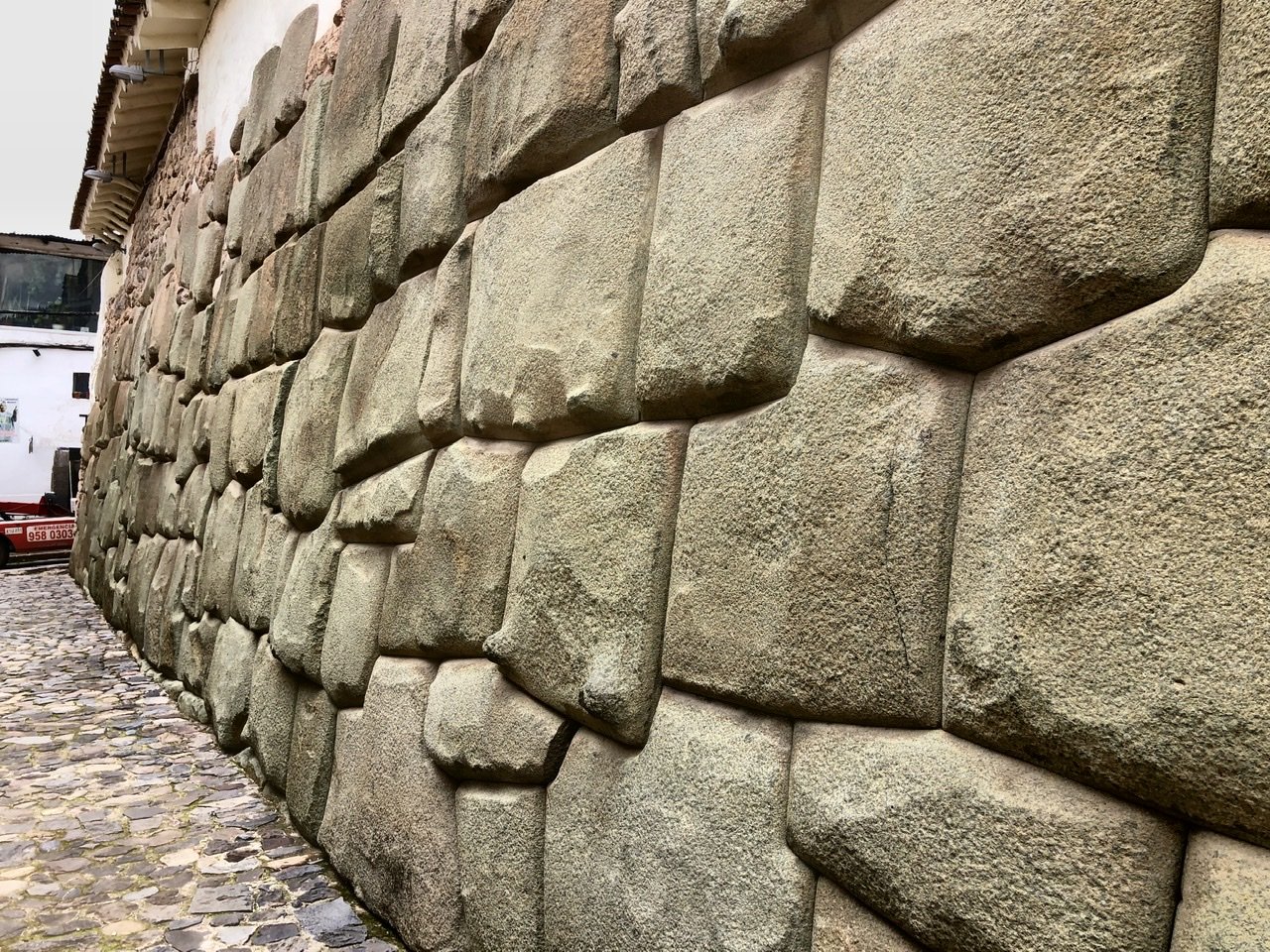
The walls of Cusco kinda make you feel like a weeny knowing they were moved by human hands without the help of animals. Seriously, how on earth did the Incas manage to wiggle all these stones into place? Also…fun fact…how do you know it’s an Incan wall? When it leans in and forms a trapezoidal shape.

The Incas were world renowned for their masterful masonry skills and this famous stone, which features a whopping 12 angles is no exception. Although at first glance, it’s not that stimulating to look at. However, when you really start pondering it, it’s an incredible geometric feat created with no tools…other than other rocks.
El Mercado Central de San Pedro
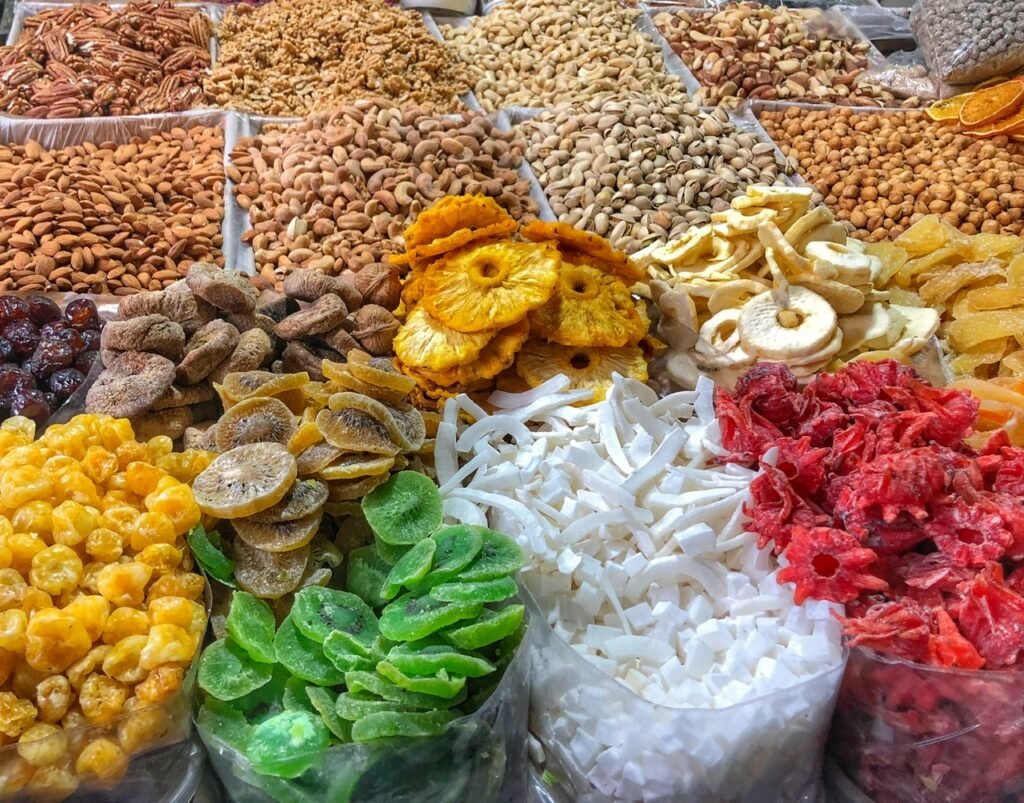
San Pedro Market, sits about a 10-minute walk away from Plaza de Armas, but is mostly a truly authentic experience, unlike you’ll find in the center. We went here several times, but especially enjoyed stocking up on nuts, dried fruit and other trail snacks in preparation for our trek. We got about a kilo (2 lbs) of these goodies for around $13, which is an incredibly good value. We’ve realized that nuts aren’t cheap anywhere in the world!
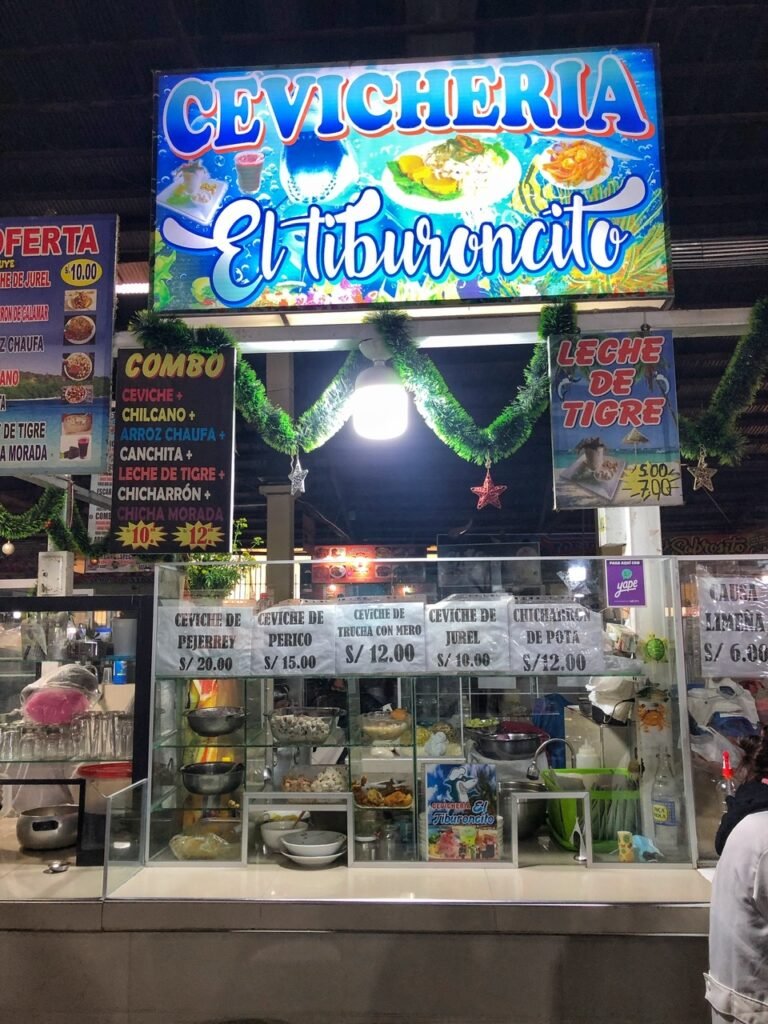
Another great thing about San Pedro Market is the plentiful Ceviche and Peruvian street food options starting around 10 soles or $2.50.
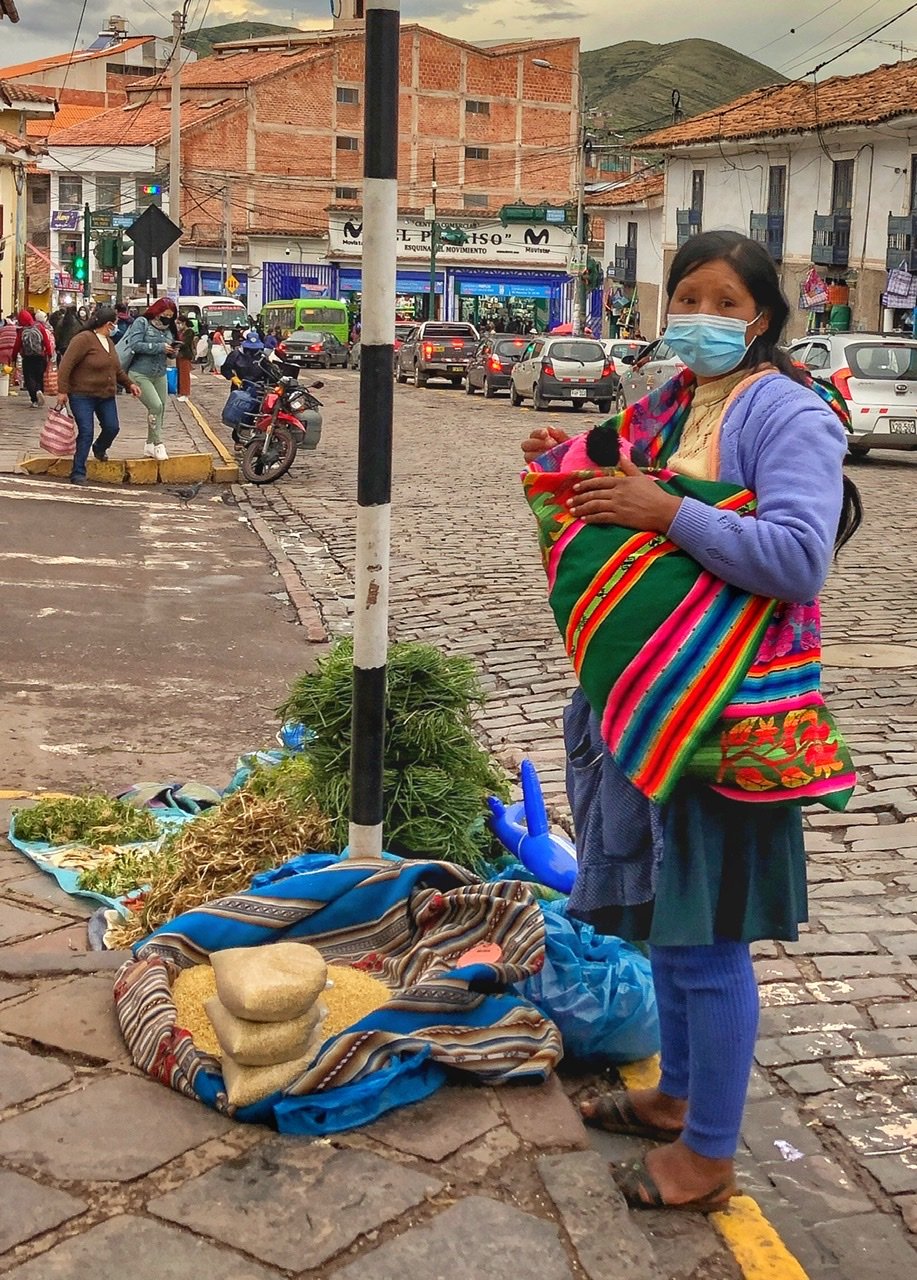
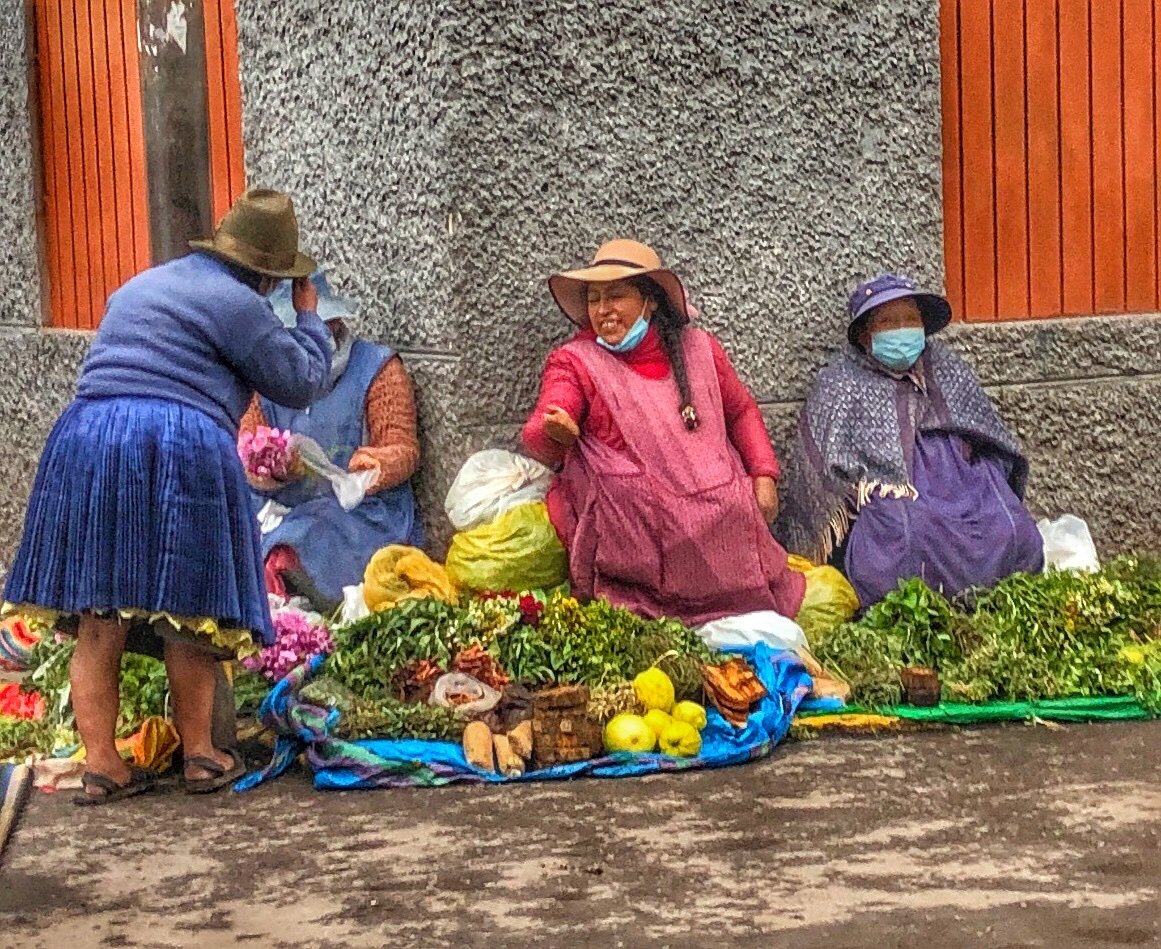
Ladies selling vegetables outside of the market.
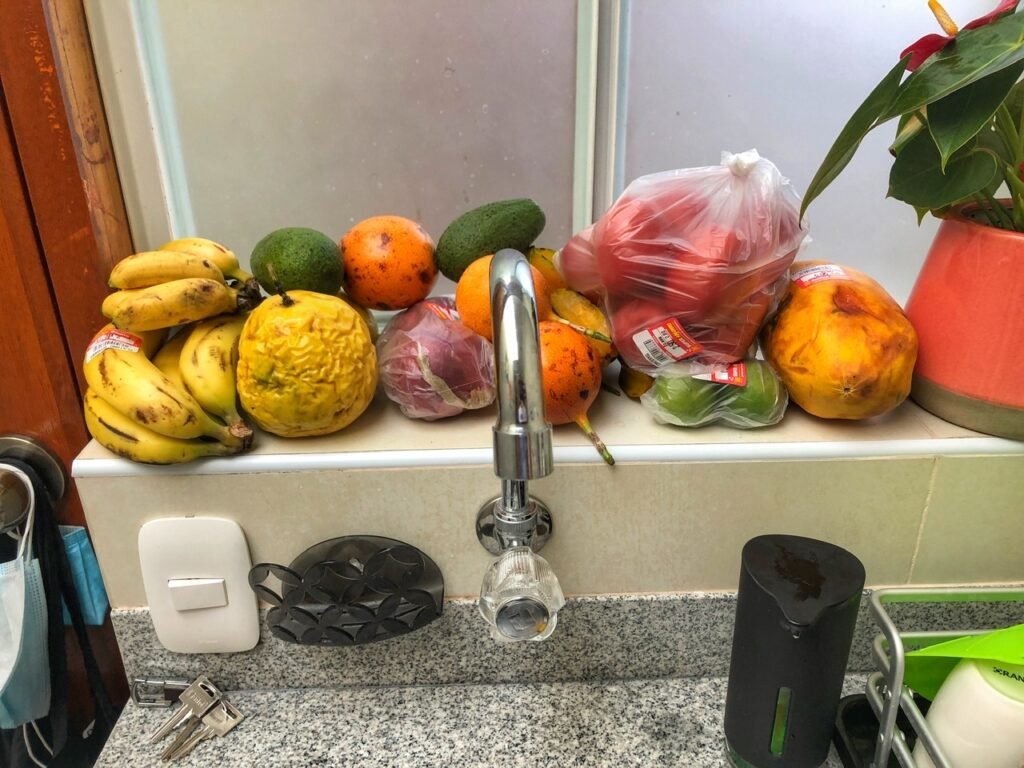
Speaking of markets… This is sampling of our market visit. About one week of groceries: $32.77, which we found comparable to Colombia or Mexico.
Baked crackers: $1.75
5 carrots: $.40
4 star fruit: $.30
3 Heads of Broccoli: $.75
4 bananas: $.50
8 tomatoes: $.55
3 passion fruit: $.55
2 red onions: $.15
1 medium papaya: $1.20
4 granadilla: $.80
Red wine bottle from Peru: $4.20
Giant head of romaine: $.45
Giant bunch of basil: $.12
1 white onion: $.30
Bag of spinach: $.20
1 garlic clove: $.15
Broth packets: $.30
Liter of milk: $1.15
Pint of Blueberries: $1.50
Green tea box: $1.25
1 liter of plain yogurt: $1.60
1 red pepper: $.20
Coconut oil: $4.50
Mozzarella cheese: $1.75
Dark chocolate bar: $2.50
3 avocados: $1.25
Bag of Quinoa: $1.15
Mustard: $.50
4 limes: $.12
425 grams of sardines: $1.25

Another surprising thing in Peru? Olives. 1/4 kilo was about $2. We had no idea they grew olives here, but they’re as plentiful, cheap and delicious as they are in the Mediterranean.
San Blas Neighborhood

Our favorite neighborhood in Cusco was undoubtedly San Blas, which is tucked to the north of the city and bizarrely makes you feel like you’ve been transported to Greece. Since Incan days when it was known as T’oqokachi, San Blas has been the part of Cusco where the artisans and architects lived with its breath-taking views of the Cusco Valley. Today, it is still often referred to as the Cultural and Arts District of Cusco.

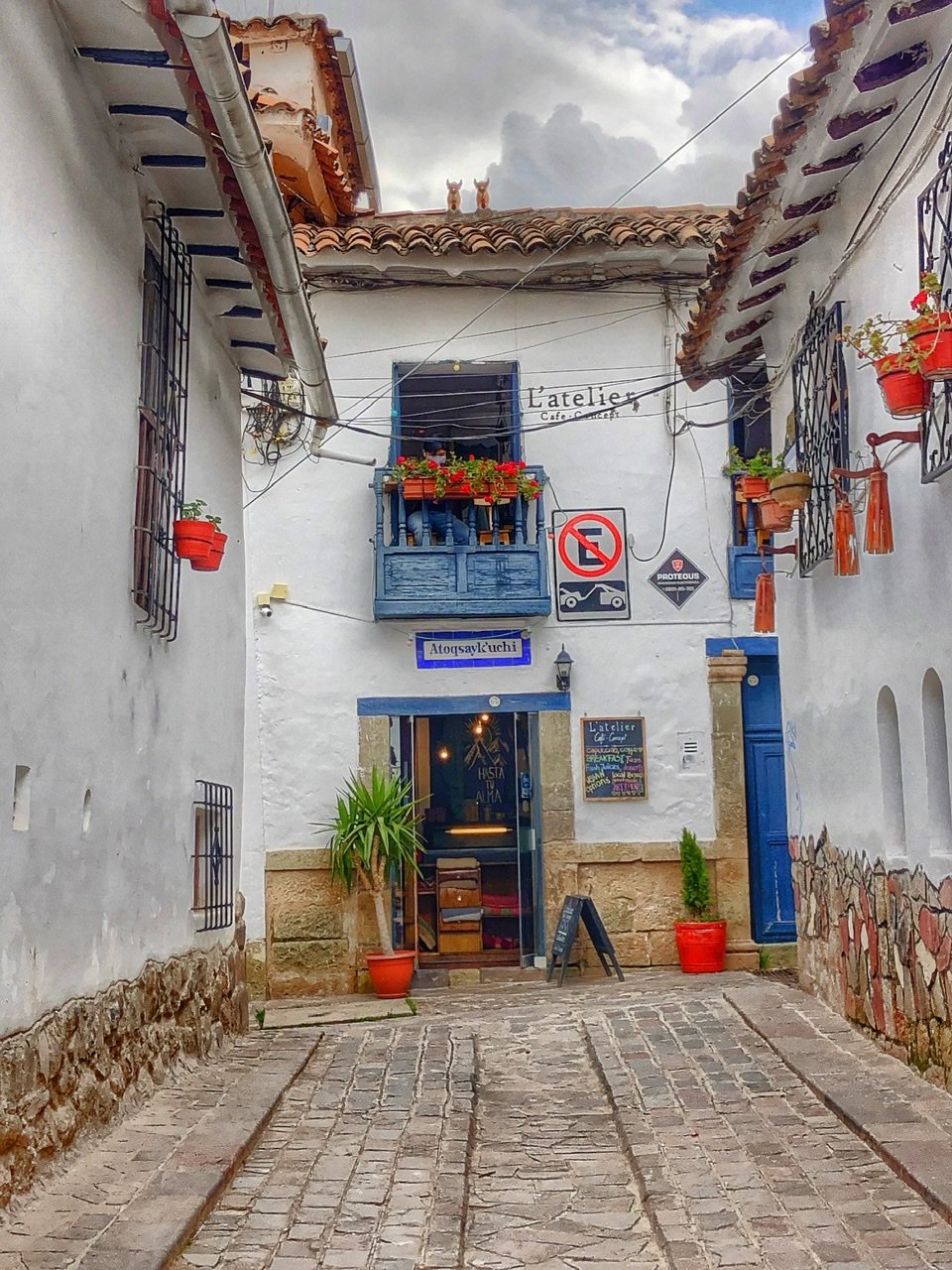
It is loaded with galleries, artisan shops, cafes and chic bars and restaurants.
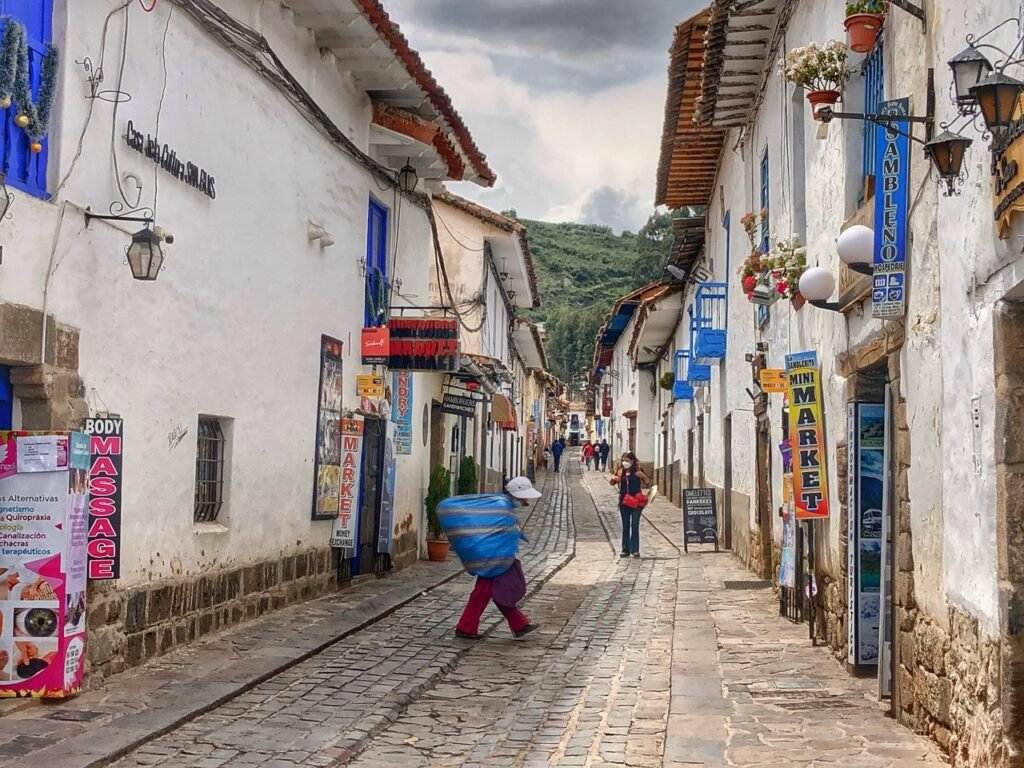
Hundreds of years of life in motion.
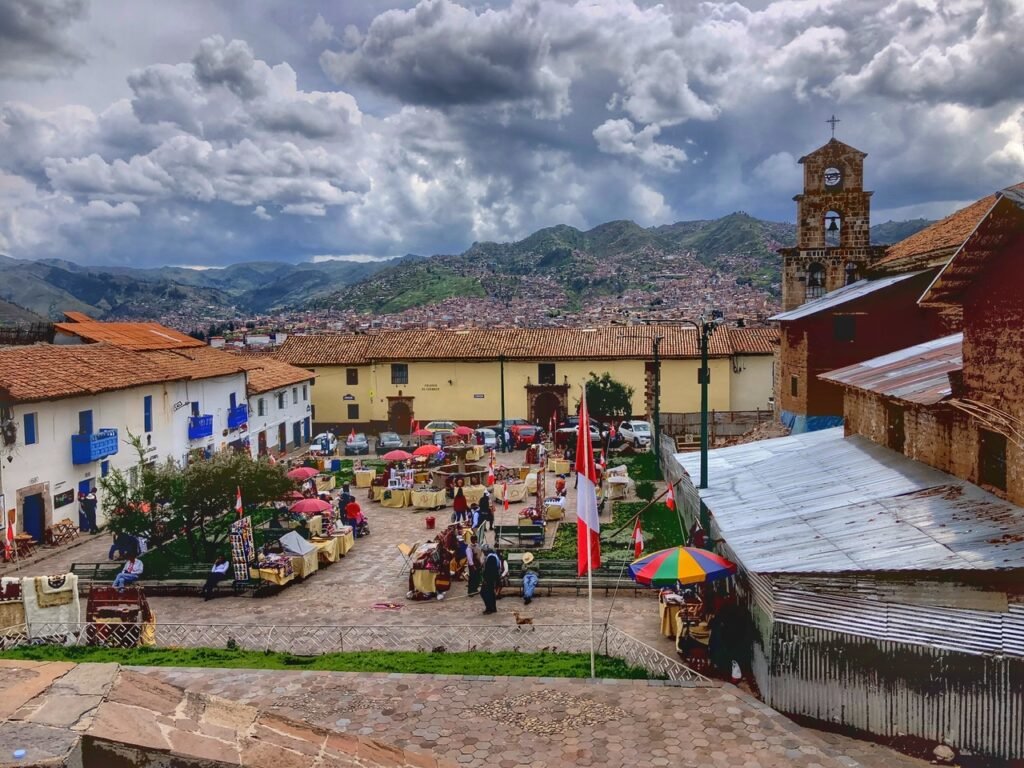
The Plaza in San Blas.
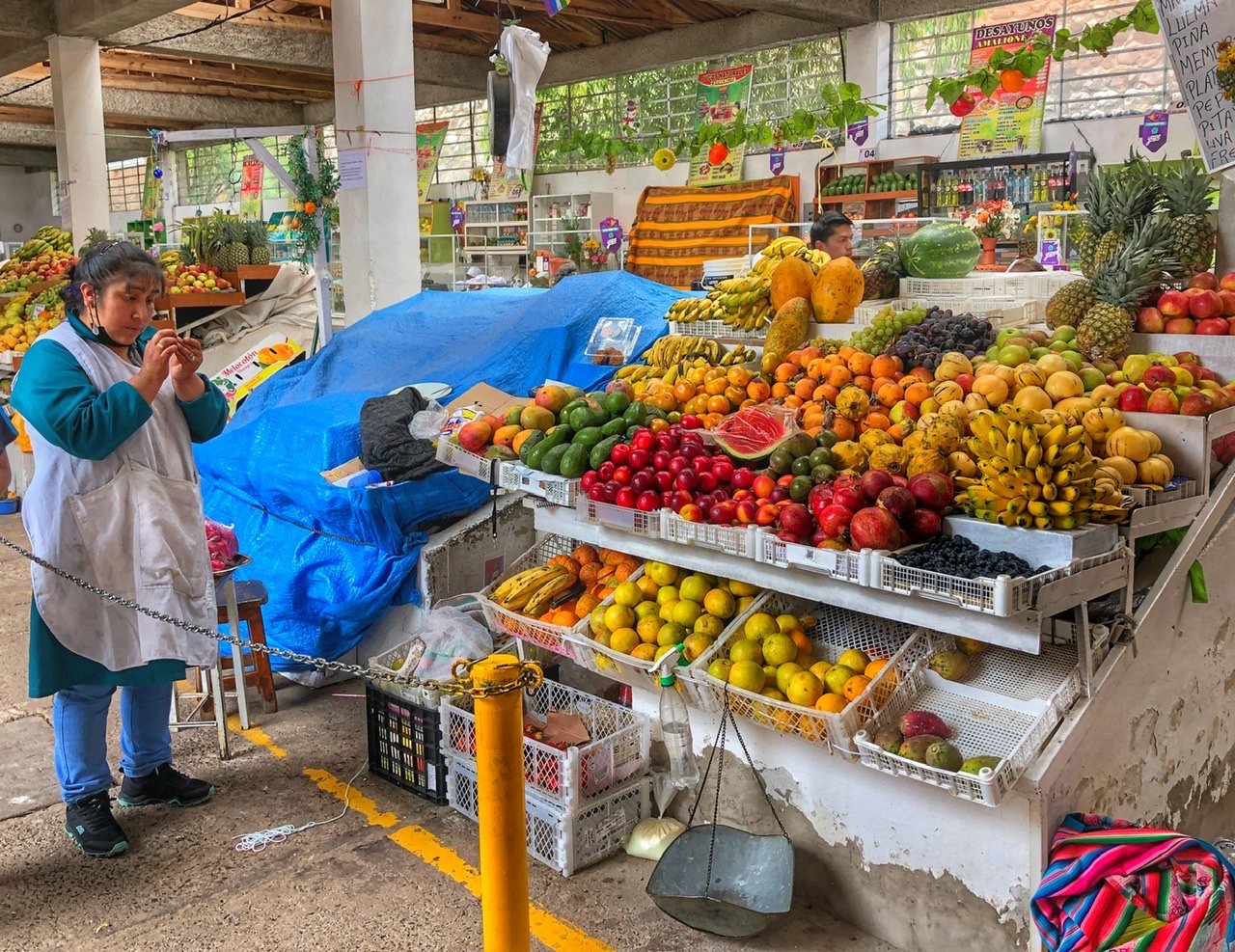
The mercado in San Blas. We love the fact that absolutely every type of fruit is available in Peru…both the tropical and temperate varieties, including berries and pomegranates.
The Coca Museum
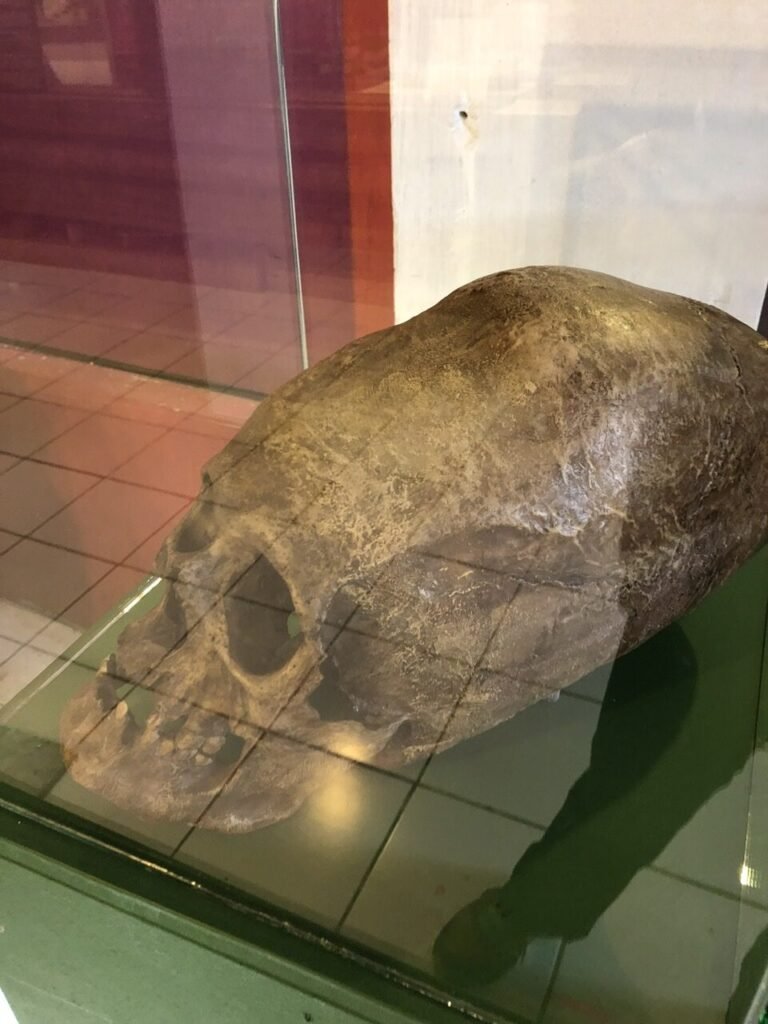
Also in San Blas was the Coca Museum, which was offering free admission on the day we went. We learned all kinds of interesting things there like how the Incas and Pre-Incas participated in skull deformation. In order to deform the skull, they tied the head with small flat boards and wrapped it with leather bands and thin boards while the skull was still forming. (Yes, that means as a baby). The skull was first covered in a cream made of coca and other plants because of its analgesic and “softening” properties. Skull deformation was practiced to indicate royalty or for religious purposes. Um. Okay.
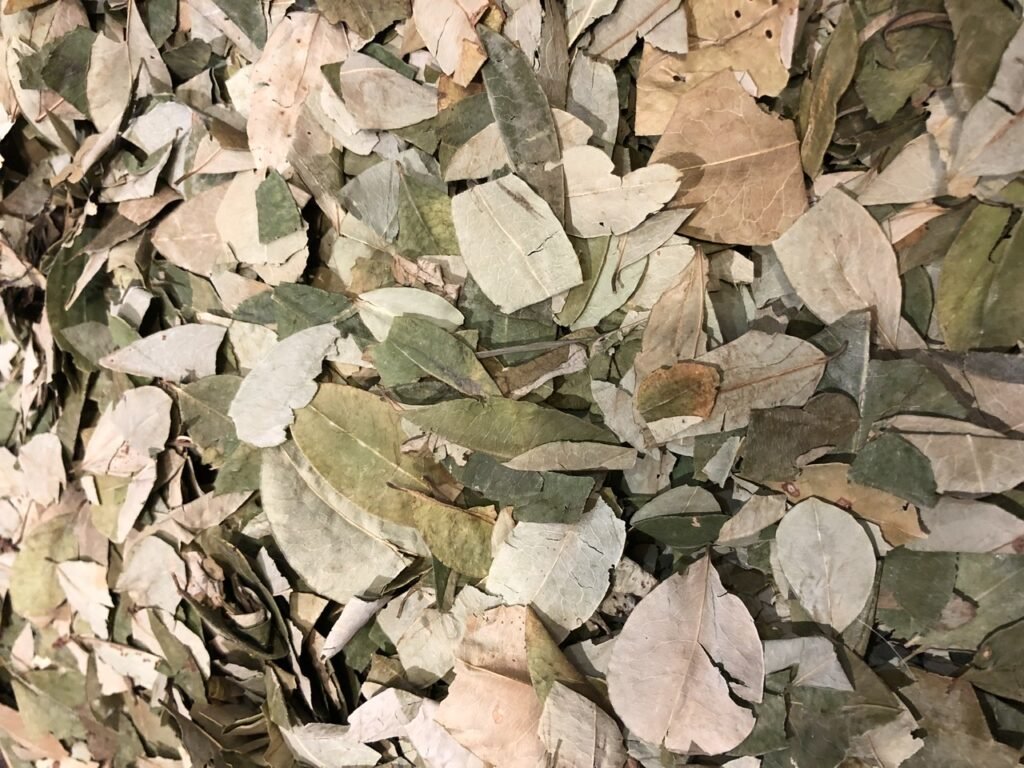
Piles of coca leaves, which were used as offerings or payments to Mother Earth (Pachamama) during ceremonies and rituals.
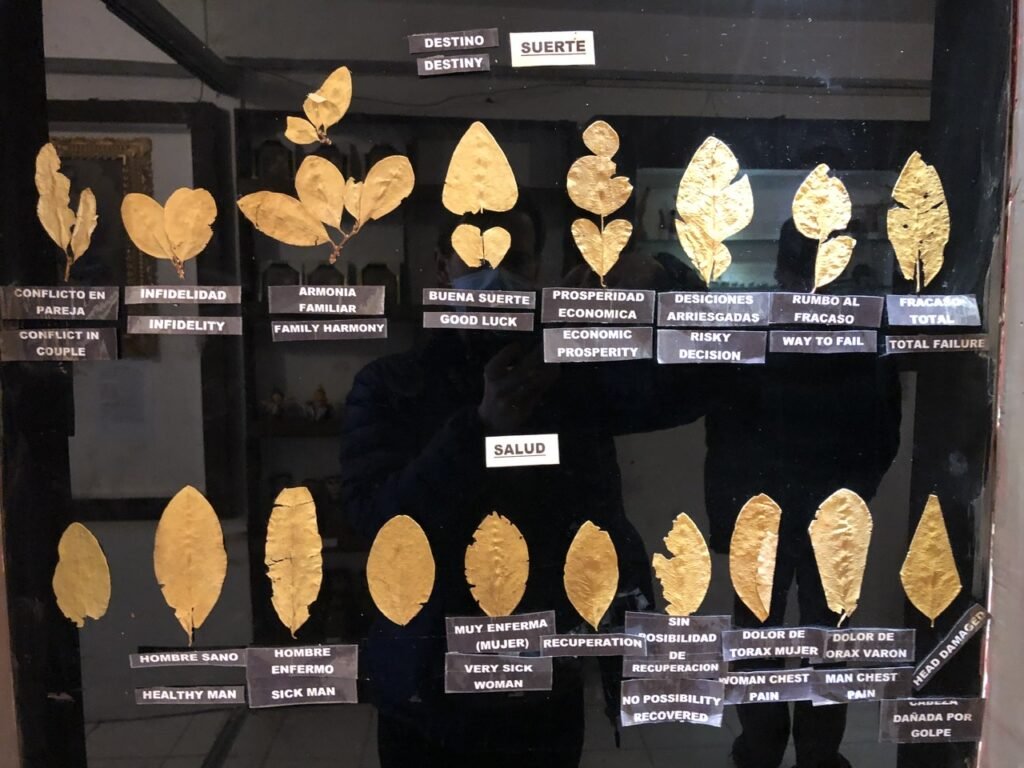
Like in Asian cultures with tea leaf reading, the Incas had a long history of reading coca leaves. It is practiced by individuals who inherited the gift to invoke the spirit of coca getting into a higher consciousness and to predict the future based on the interpretation based on the characteristics and location of the leaves in the bottom of your cup. They believe Andean coca has been created by Pachamama to guide societies together and coca reading is one of these ways.
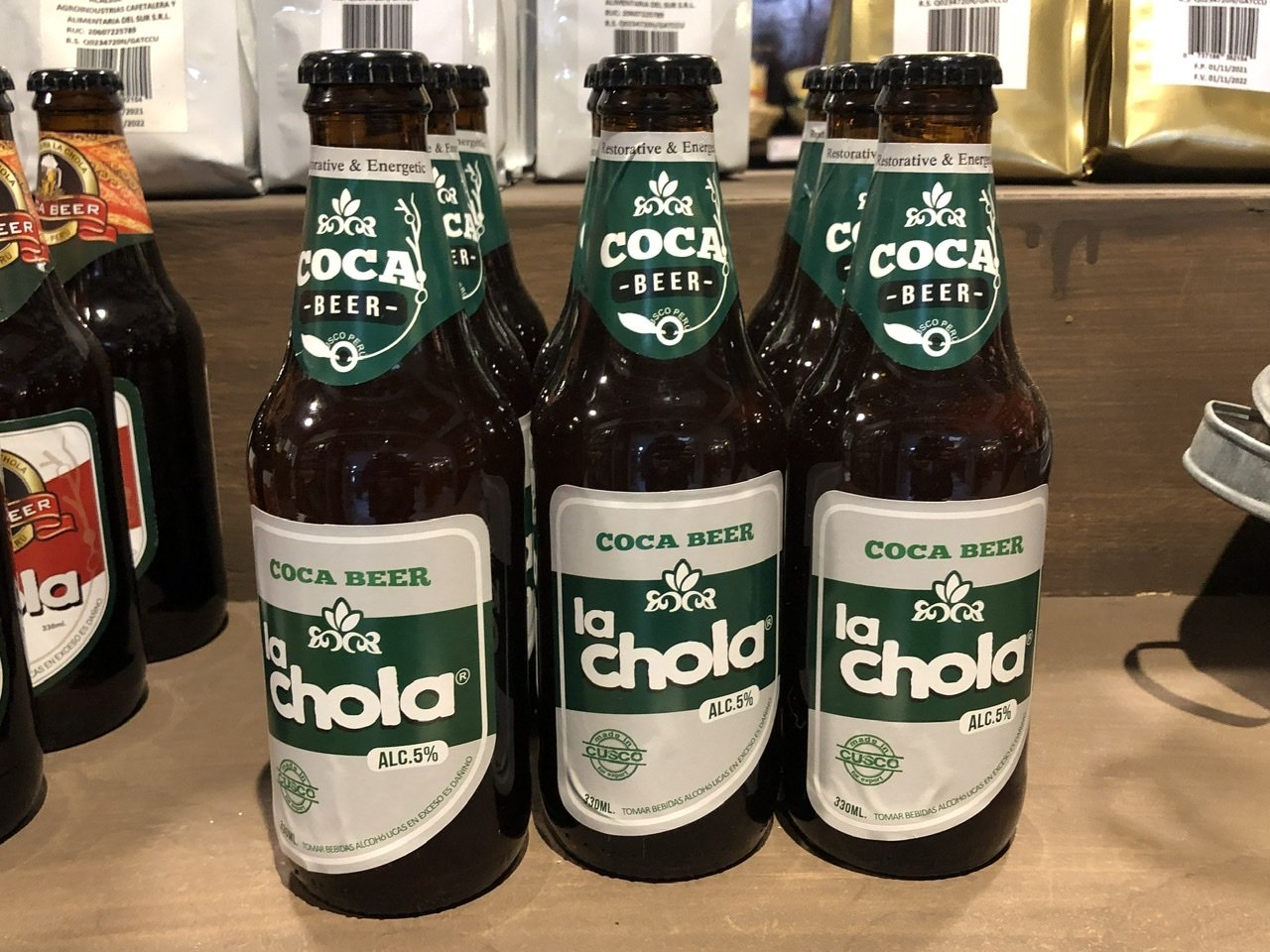

Other things available at the Coca museum included Coca Craft Beer!
Favorite Food & Drink
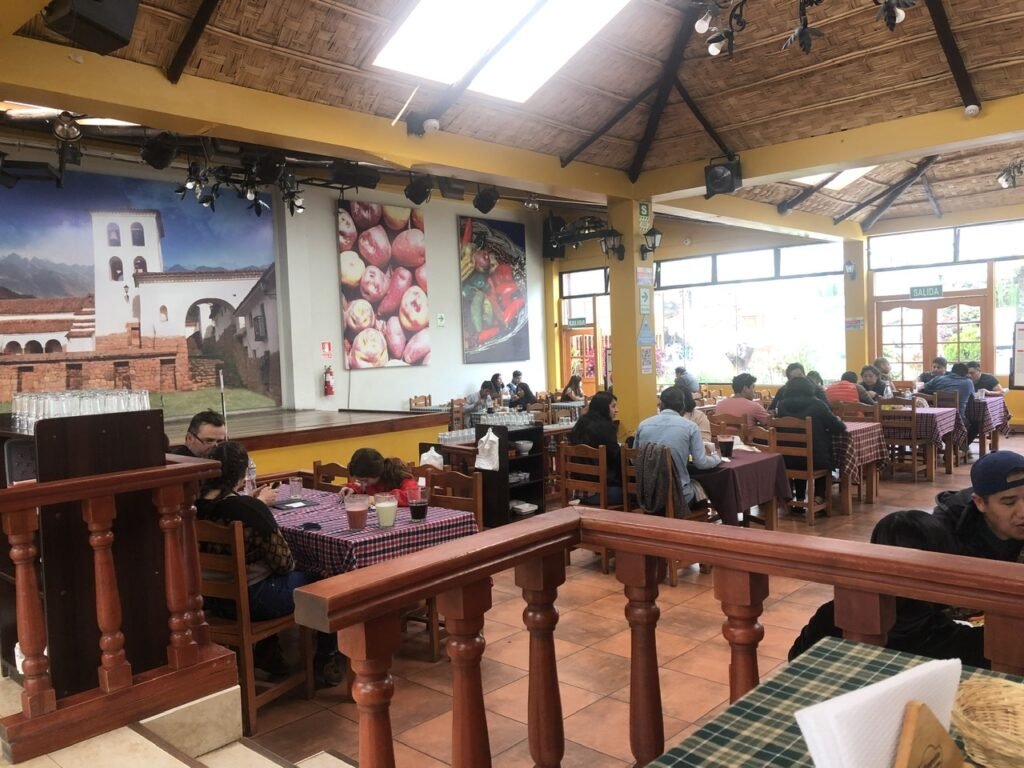
Although we spent a lot of time cooking in Cusco because we had a kitchen, we still had to sample some of the fantastic restaurant options. One of the best local picanterias happened to be conveniently located a few steps from our apartment called La Cusquenita. This restaurant, only open for lunches, was as traditional Peruvian as it gets and reminded us of a German beer hall with a Peruvian flair, including a stage for Peruvian dancers.
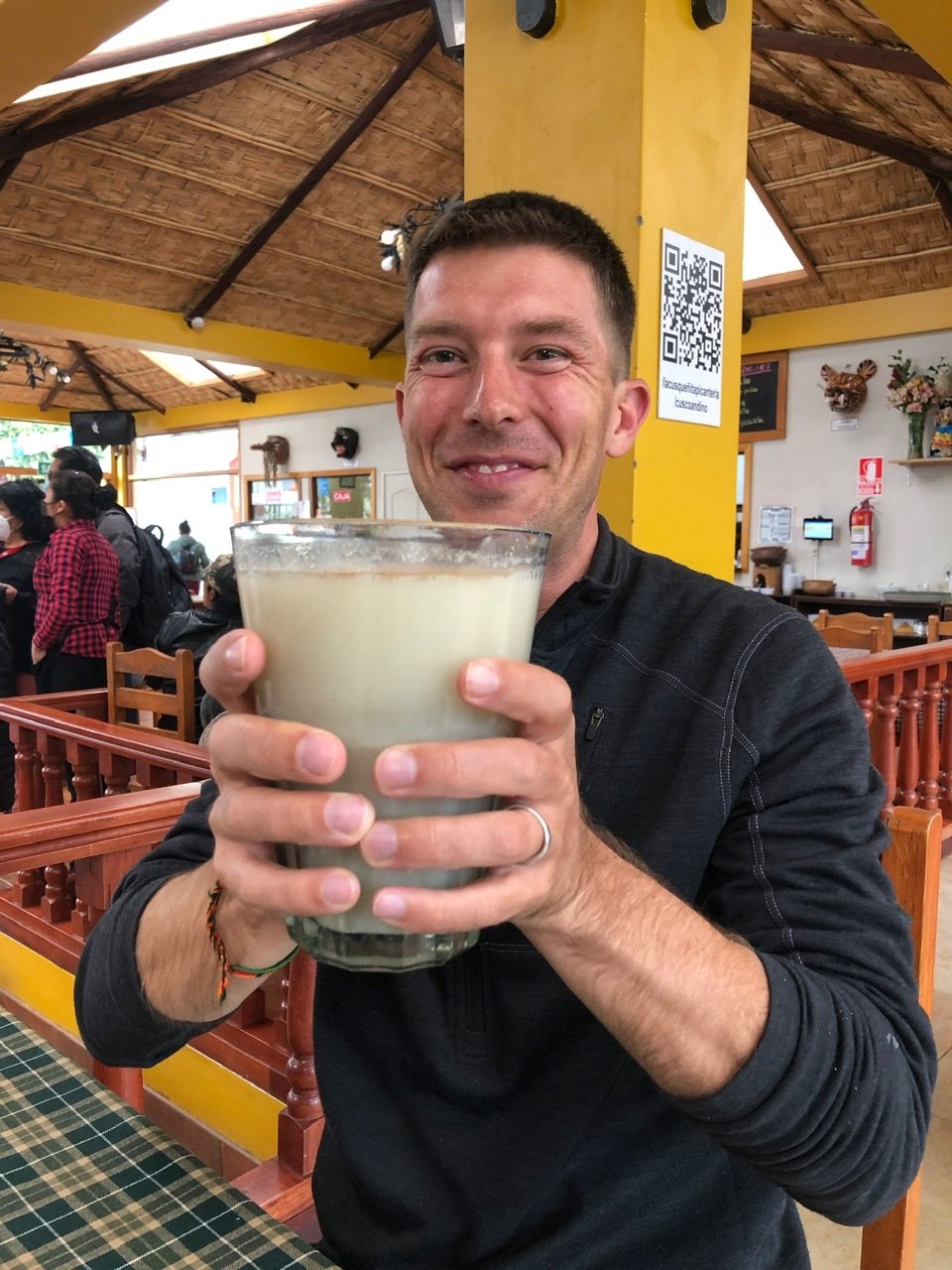
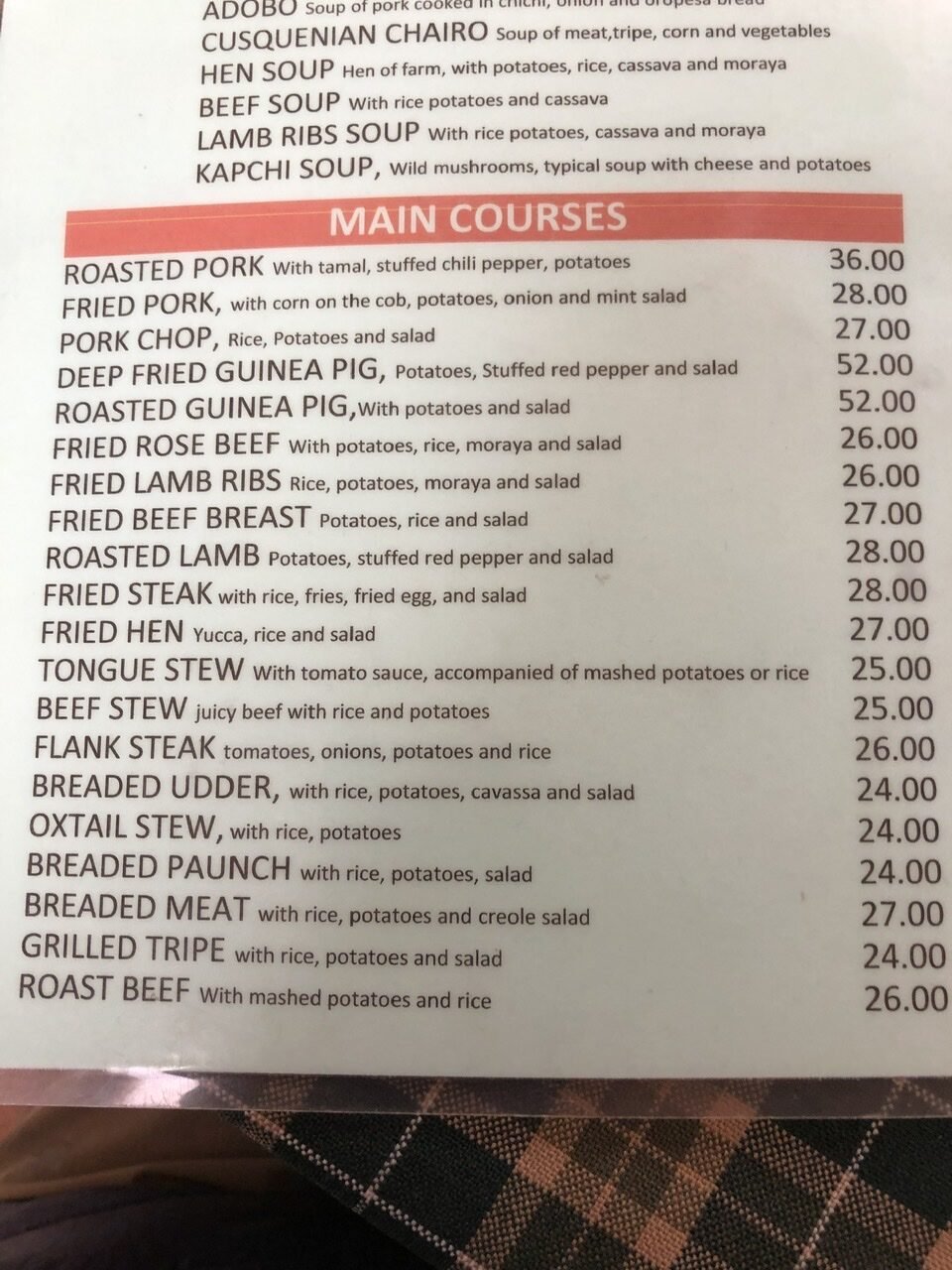
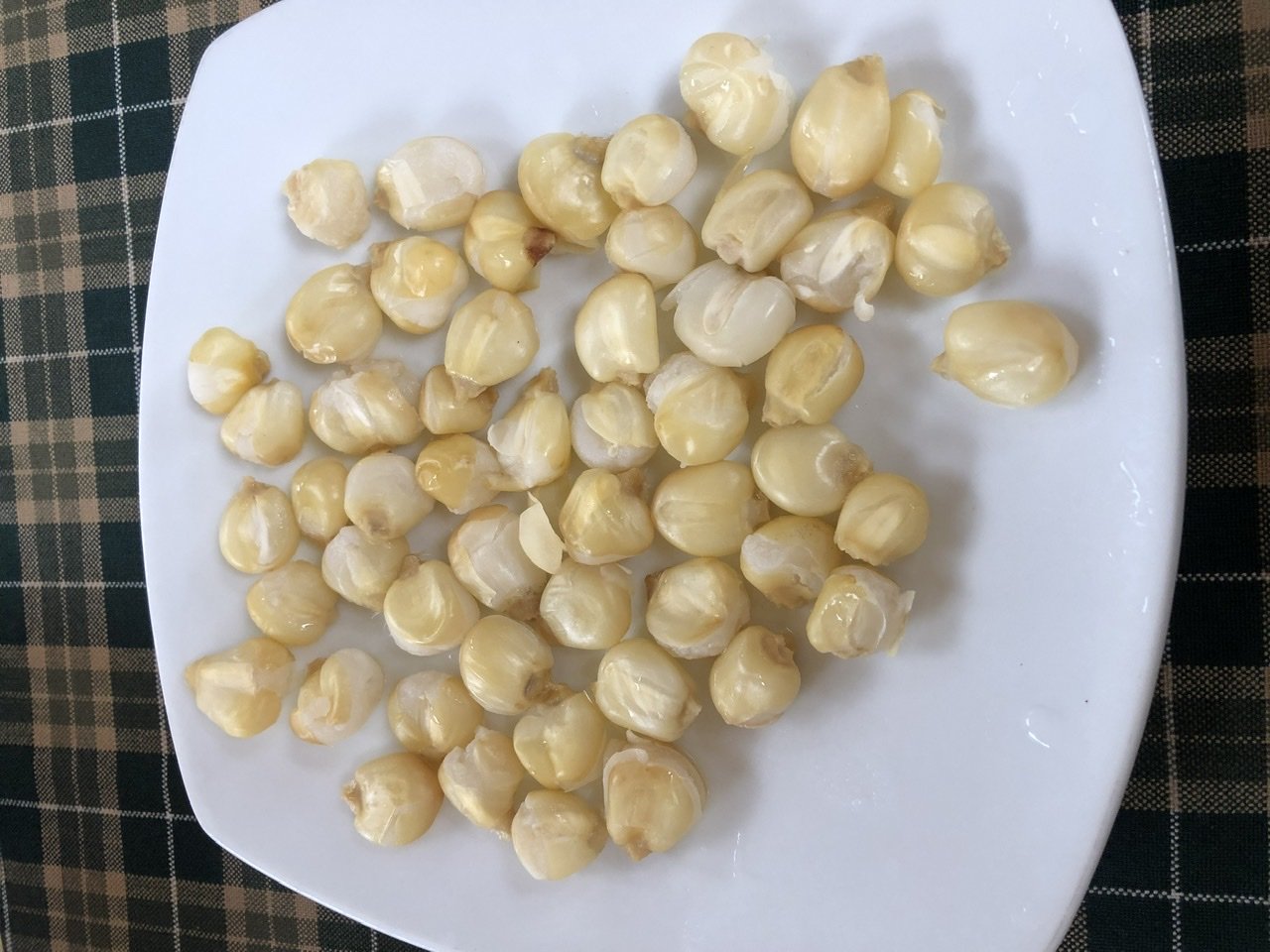
Our server, who surprisingly spoke English, brought us a sampler tray of all the different types of Chicha, which is a fermented drink made either from corn or quinoa. This timeless and iconic drink dates back a thousand years and was traditionally made by the chicha maker kickstarting the fermentation process with his or her saliva. (We also experienced this in Colombia.) However, in Peru, it had a special significance in the Incan Empire because corn was considered a sacred crop. It was also incorporated into religious rituals where it was poured as a sacrifice to the gods. It is still common to pour out a little chicha before drinking it as a offering to Pachamama, or Mother Earth.
We settled on sharing a giant glass of Chicha Blanca, which was made of quinoa. It was slightly sweet, a bit nutty and very filling.
At they beginning of the meal they also brought us, Choclo, or big Peruvian corn (with a creamy texture). It is is served as an appetizer with every meal. Kinda like chips and salsa at a Mexican joint.
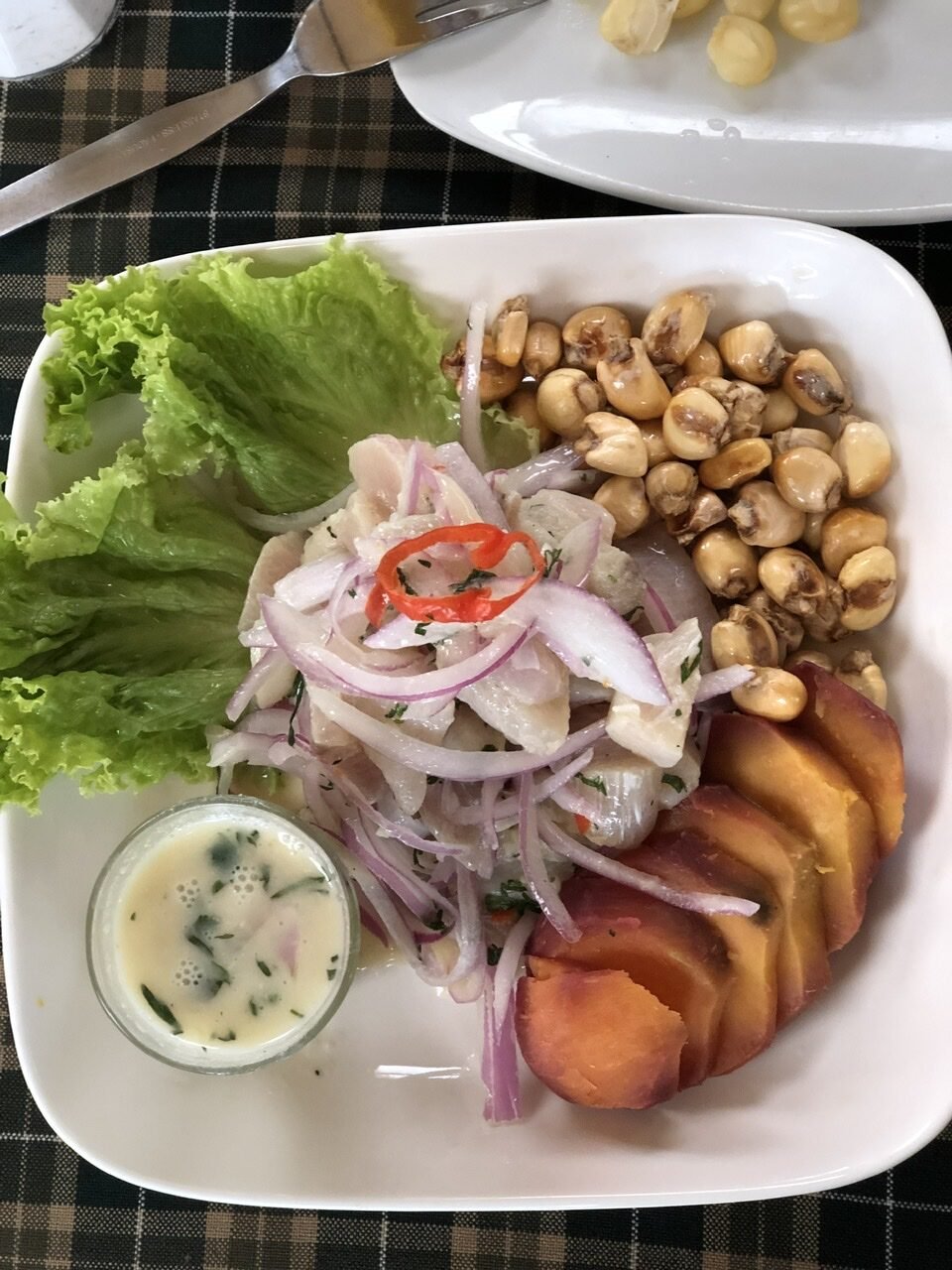
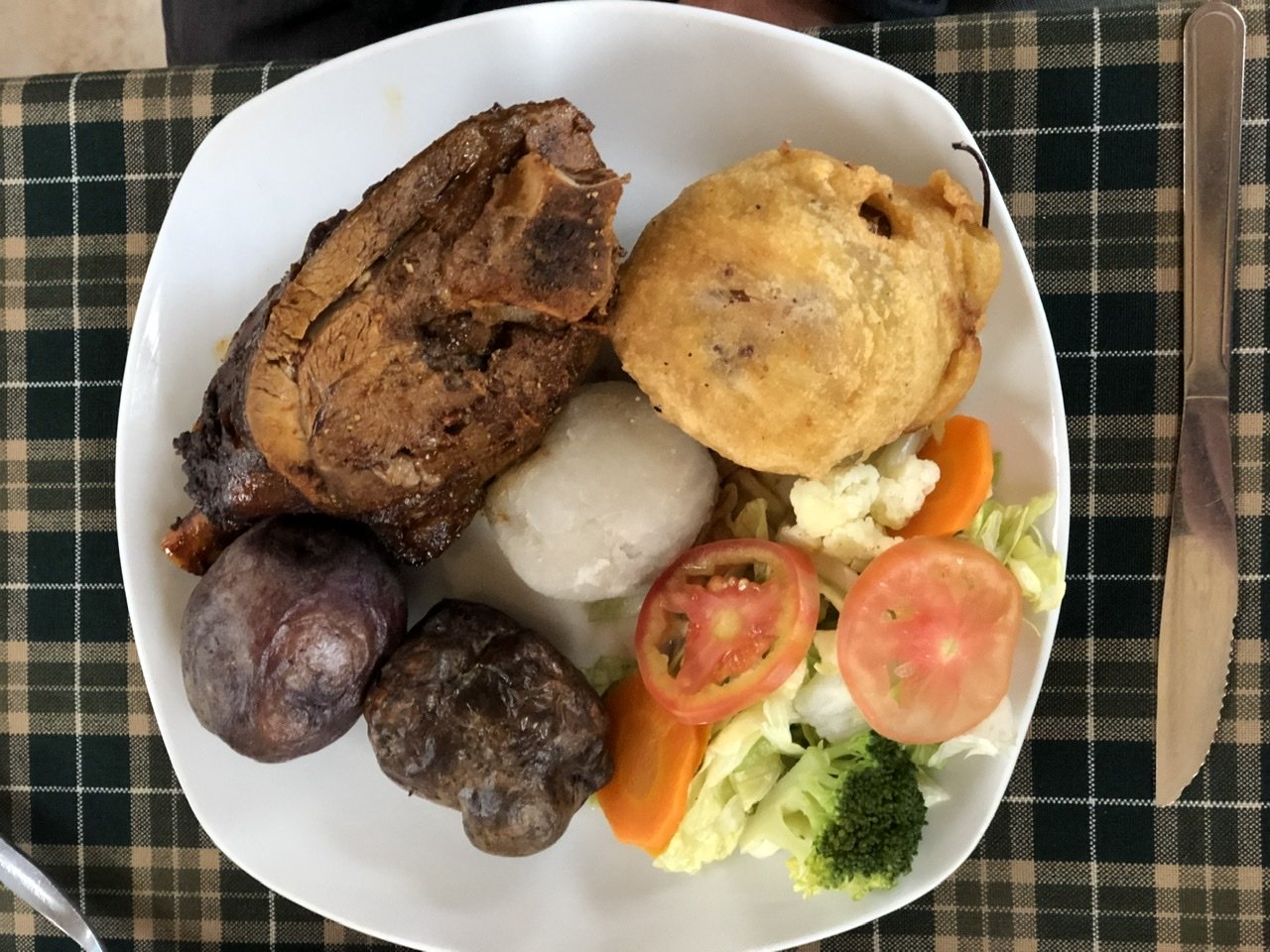
La Cusquenita was heavy on the meat dishes, including lots of ridiculously expensive (70 soles/$18) baked rodents (guinea pigs) emerging from the kitchen. Mandy wrinkled her nose and always preferring her pescatarian options, settled on ceviche, while Greg got a man’s meat and potatoes meal with lamb.

Choclo & Cheese at a different restaurant. We tried this because someone told us “you can’t miss it,” but we didn’t see what the fuss was about. It was corn. And cheese. Not even good cheese. HAHAHA.
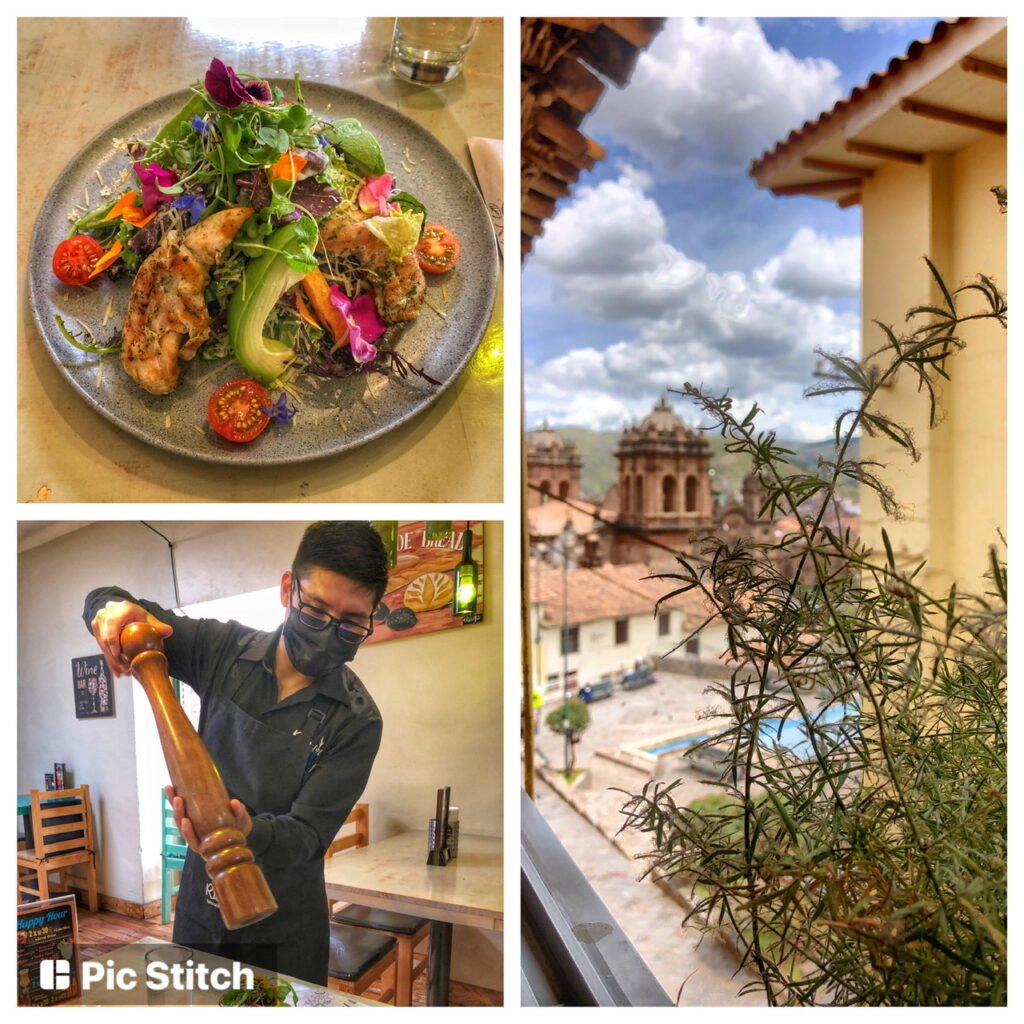
But one of our favorite restaurants was called Organika, which we went to twice while in Cusco (Thanks for recommending, Yumi!) It was that good. Their salads (18 soles/$4.50) were possibly the best salads we’ve ever had. Plus, the guy came around with a pepper grinder and it had a fantastic view.
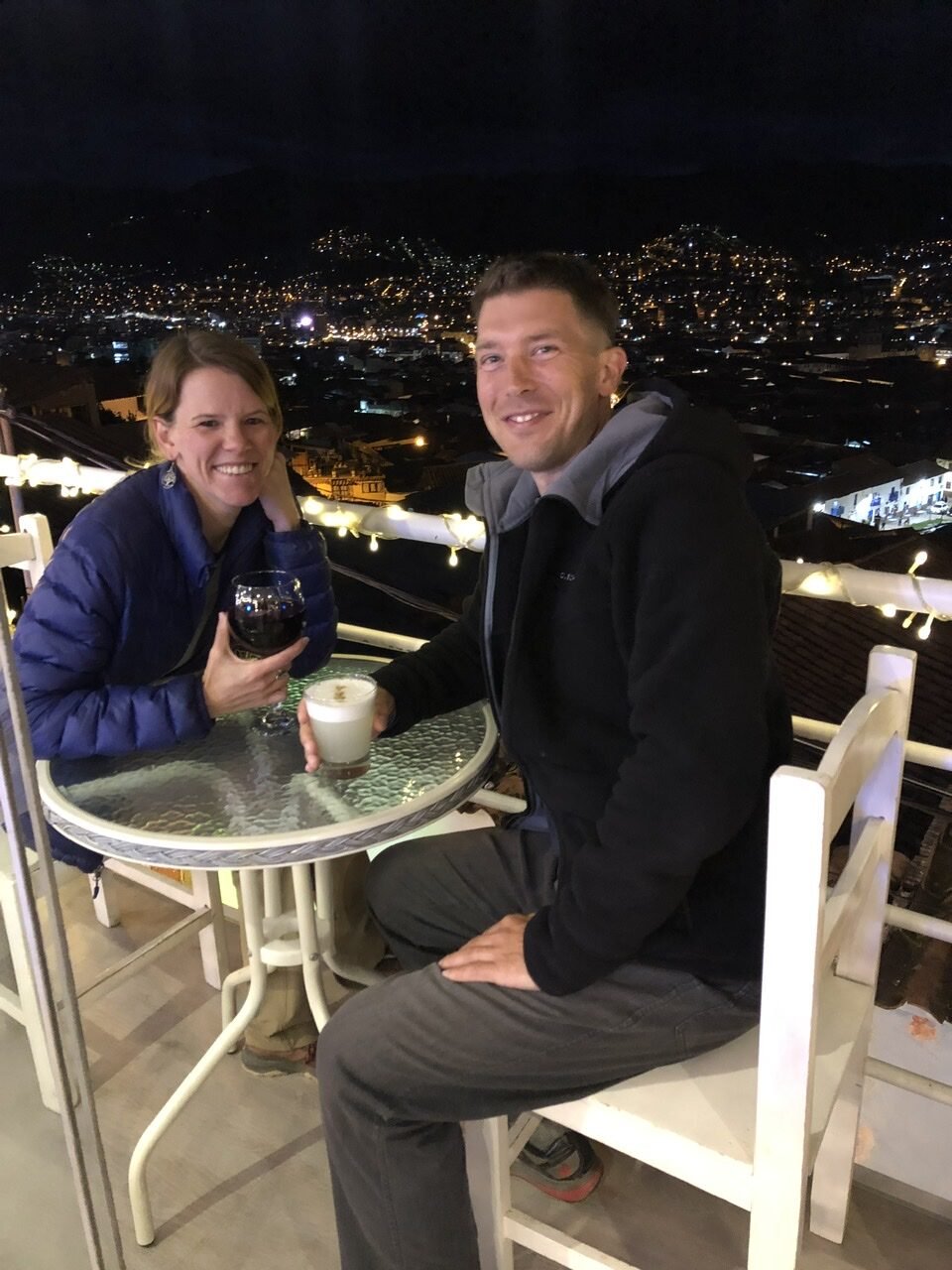
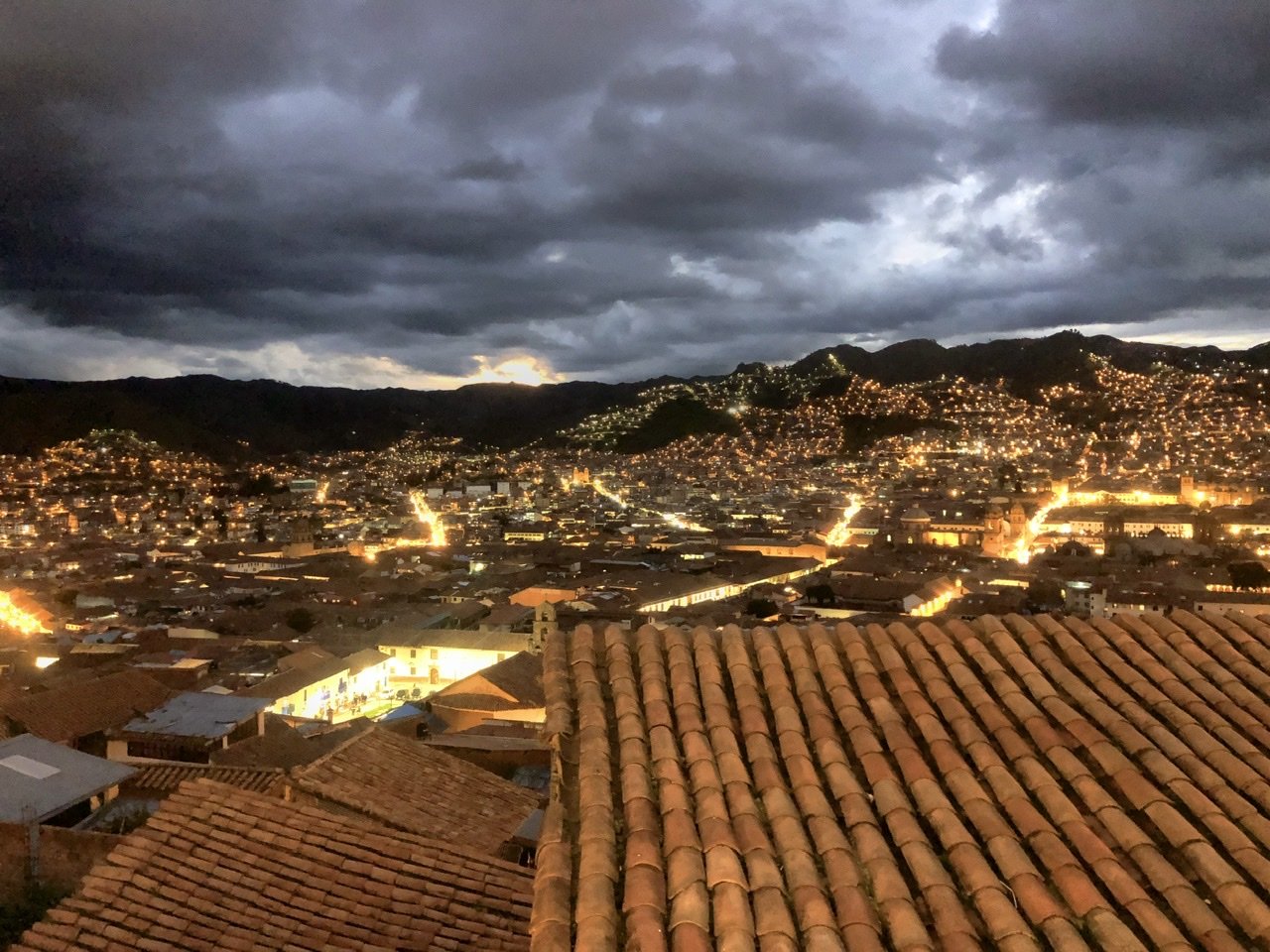
And our favorite drink with a view award went to View House. Mandy had a very large pour of red wine, (which made her quite tipsy,) and Greg had a Pisco Sour. Both were 16 soles or about $4.
All in all, we loved our time 18 days in Cusco, but like many tourist cities, it sometimes felt a little chaotic to us. Looking back we probably would have split the time and spent several more days in Pisac and Ollantaytambo. Well, if we ever come back…we’ve got a plan!

